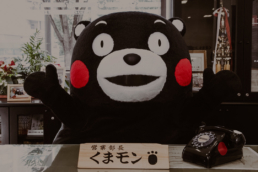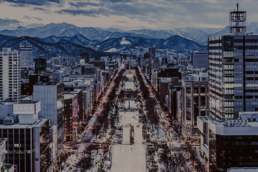An unusual Pokèmon appeared at Yoshinoya in Japan
A whole generation has been affected by these pocket monsters called Pkémon and now you can find them at Yoshinoya in Japan! But how is that possible?
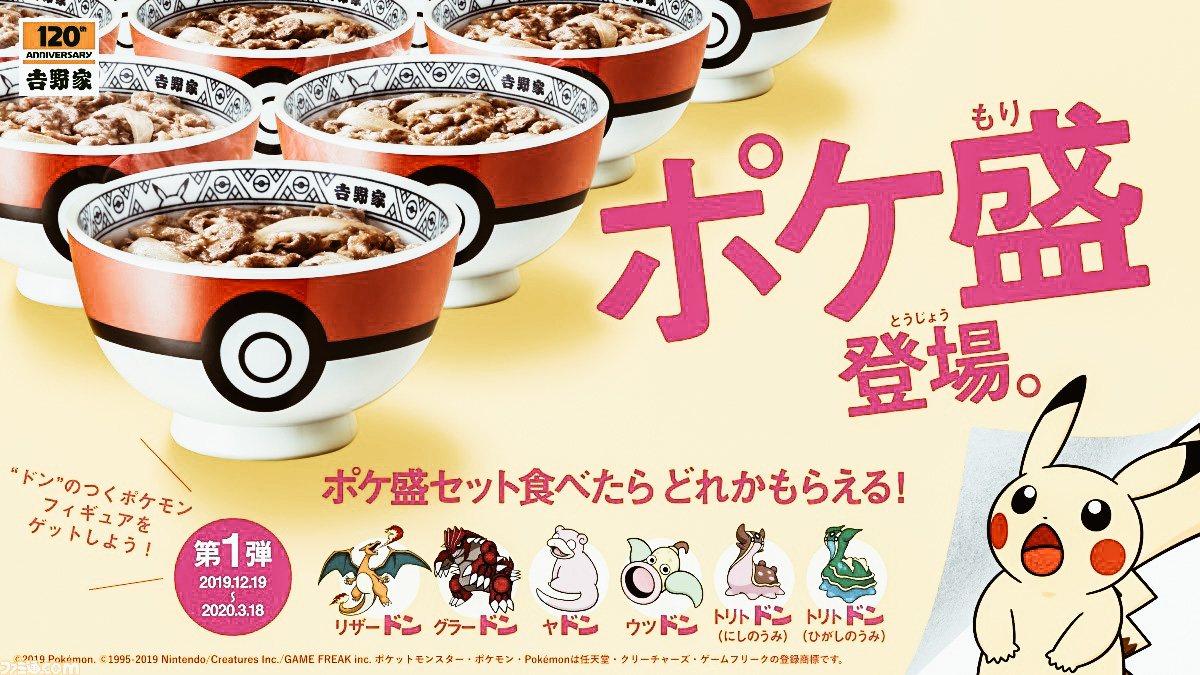
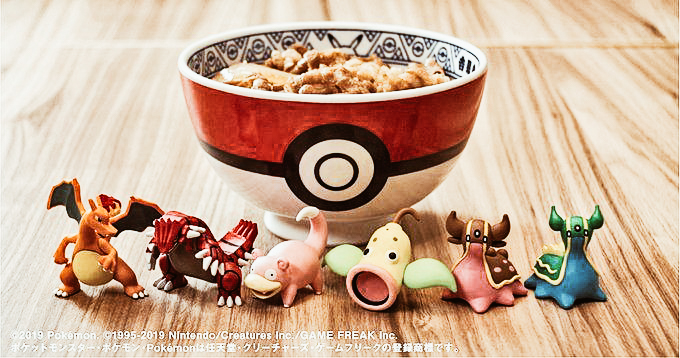
2019 marks the 120th anniversary in the beef-bowl business for the popular chain Yoshinoya. The popular fast restaurant decided to celebrate it through an interesting partnership with the Pokémon franchise.
To catch’em all will be easy and super delicious, only 6 Pokémon available this time! From December 19th, customers across Japan will be able to order a new type of beef-bowl: The Pokémori!
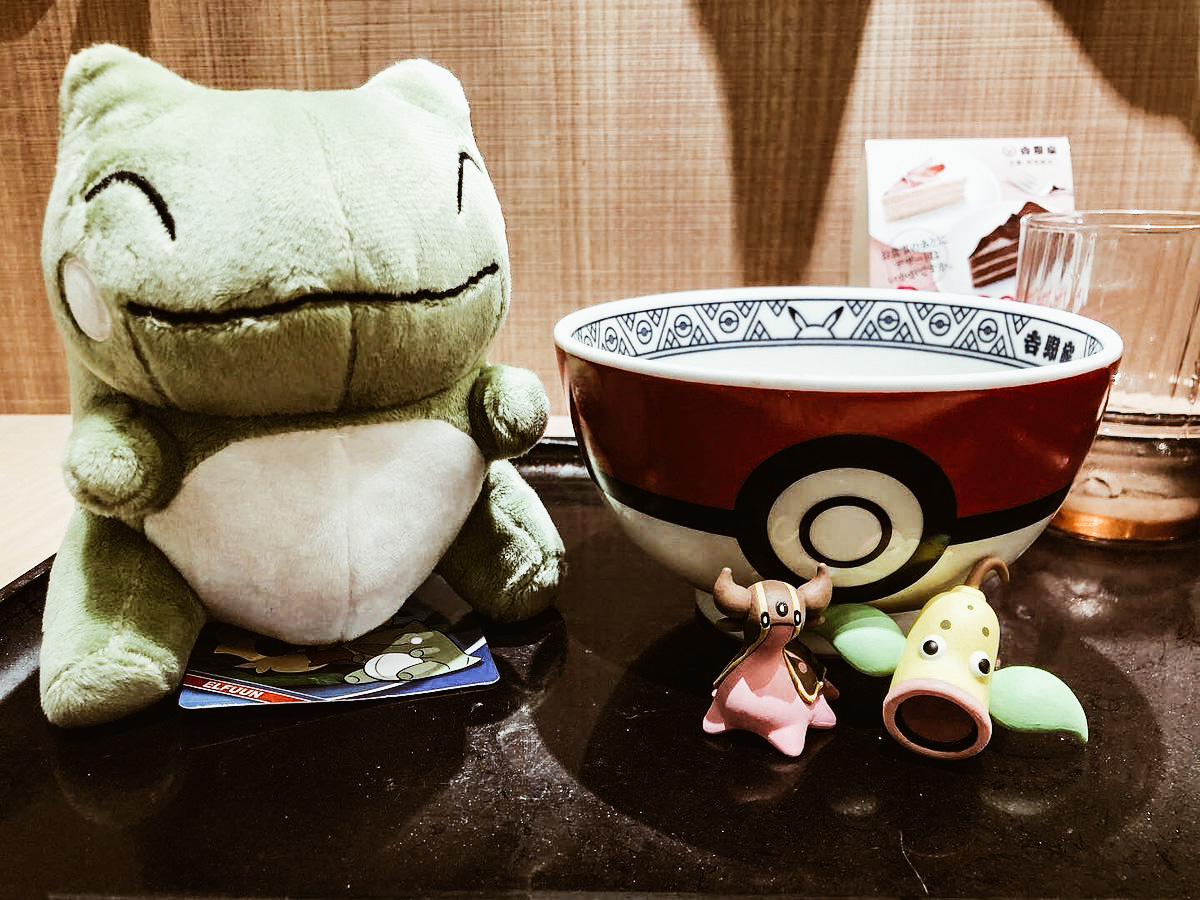
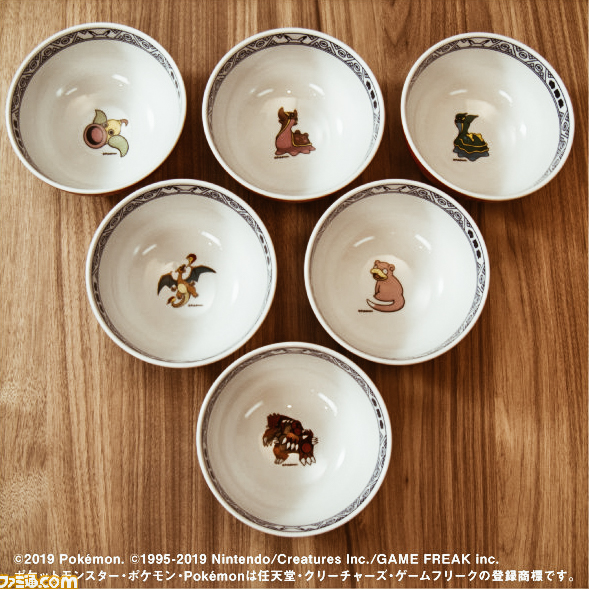

The Pomémori at Yoshinoya
Available in three varieties, Gyudon, Kid’s Gyudon, and Curry Rice, all for less than 500 yen (US$5), this special menu includes a juice box and Pokémon figure.
The word “gyudon” means “beef bowl” in Japanese, so in honor of this incredible meal of Japanese cuisine something special has been arranged. You will get the chance to find six figures of Pokémon with “don” in their Japanese name.

Left to Right: Charizard (Lizardon), Groudon, Slowpoke (Yadon), Weepinbell (Utsudon), and the West/East versions of Gastrodon (Tritodon)
However, the surprises don’t end here!
We know that the Japanese culture has a strict policy when it comes to respecting the public areas. So for all good boys and girls who clean their plates, there is a special plus! It is, in fact, possible to discover one of these monsters hiding at the bottom of the bowls, which are also specially designed to resemble Pokéballs.
Unfortunately, the surprise bowls are only used for eat-in orders in Japan. However, if you order Pokémori to-go you can get specially designed containers and bags too.
Furthermore, it is possible to enjoy one of those Pokébowls in the comfort of your own home by participating in Yoshinoya’s Twitter contest. All that you need to do is photograph and tweet your receipt from either dining in or taking out a Pokémori order. Follow Yoshinoya’s Twitter account and retweet a specific contest post, you’ll be in with a chance to win one of the Pokébowls (only available in Japan).
\ポケモン+吉野家=『ポケ盛』発売記念‼/
✨ポケ盛専用ドンぶりを抽選で30名にプレゼント✨
🔊応募方法
①@yoshinoyagyudon をフォロー
②このツイートをRT
〆切1/5ポケ盛専用ドンぶりほんっっっとうに可愛い( ;∀;)💗
たくさんの応募待ってます🎶#ポケ盛ゲット pic.twitter.com/jNKdM8Zj2N— 吉野家 (@yoshinoyagyudon) December 11, 2019
All the Pokémons are already waiting for you at Yoshinoya. However, if you want to fully live the experience, you should check out the Yoshinoya Ebisu Station location, also known as one of the swankiest Yoshinoyas around. This location will be, in fact, redecorated in a Pokémon motif too.
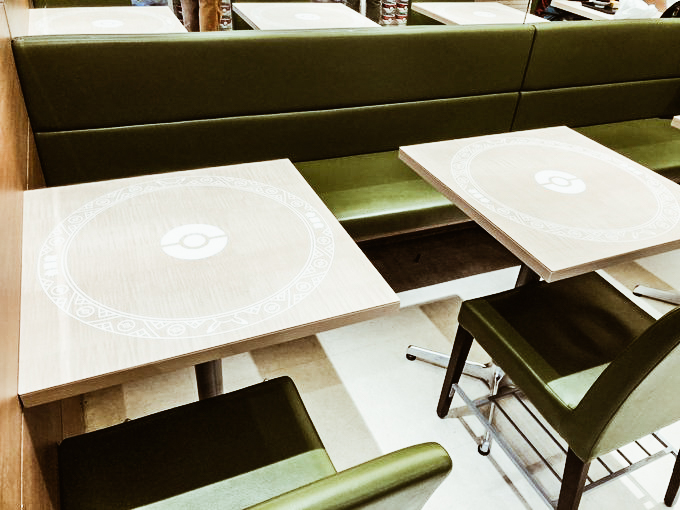
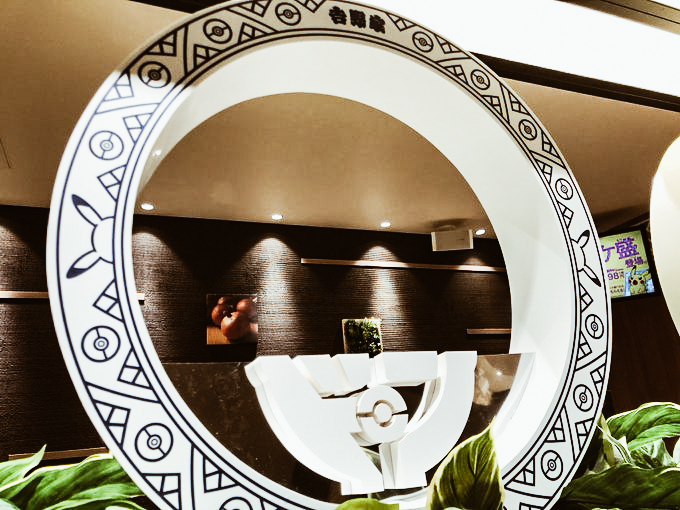
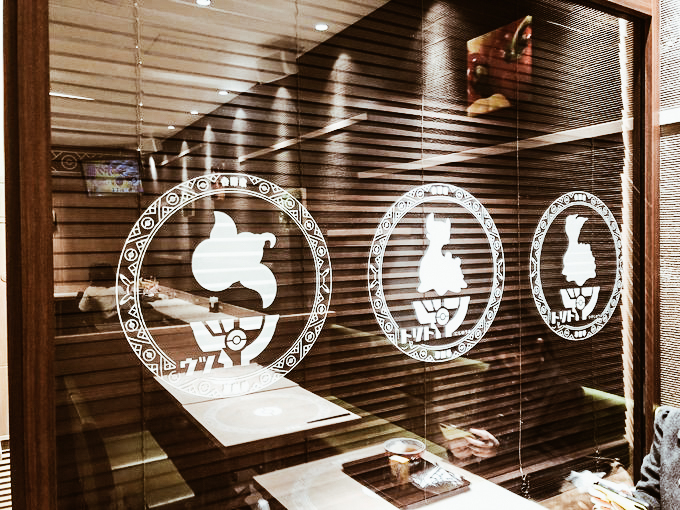

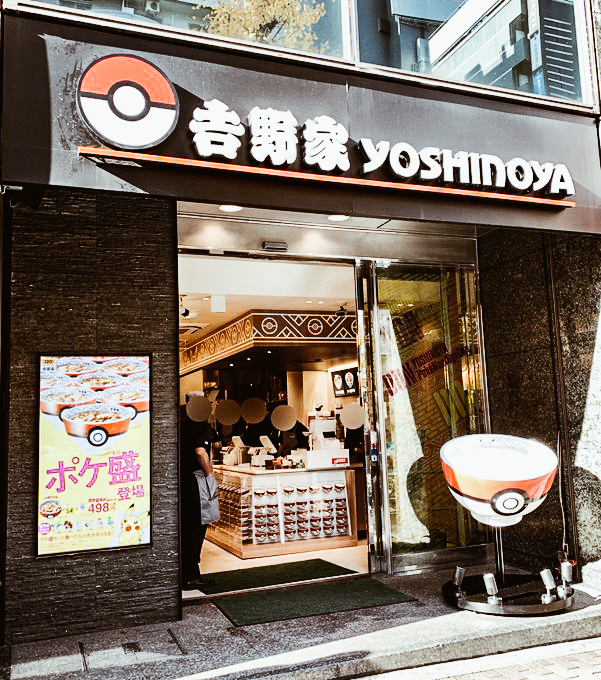
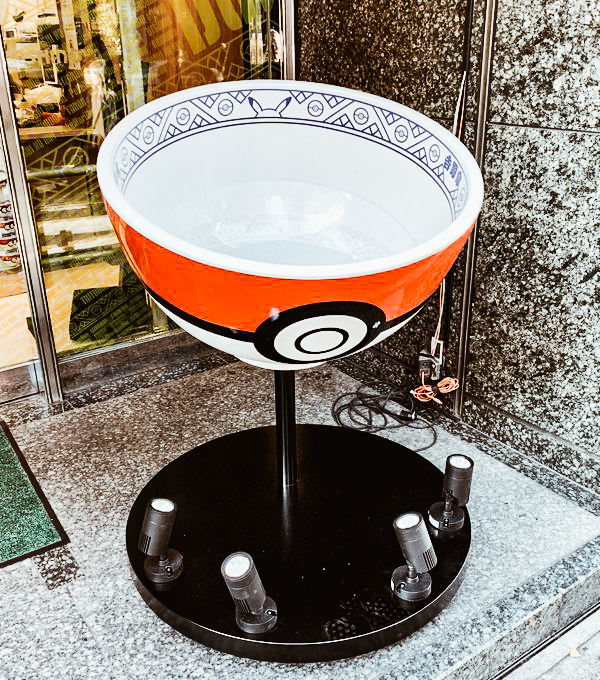
Decorations are planned to stay up until 5 January, however, Pokémori itself will only last as long as supplies do. So hurry up, you really should catch’em all!!
Source: Yoshinoya
Photo Credits: Yoshinoya, perfectly-nintendo.com, nintendosoup.com
Travel guide: Tokyo - Episode 03 - Best places to stay in Tokyo
Finding accommodation in Tokyo is extremely simple as the city offers types that fit everyone's needs. Whether it's a luxury hotel, a family one, a ryokan, the brand new capsule style, or something cheaper, Tokyo offers everything. However, what really makes the difference is the neighborhood. As we have seen in our blogs, each of them proposes splits of a complex and fascinating society, characterized by history, culture, modernity, technology and much more.
For this episode dedicated to our practical guides, we have decided to offer you and collect a list of what for us are the best areas to stay in Tokyo based on interests and their most outstanding characteristics.
Back in time: Asakusa, Edo all the way!
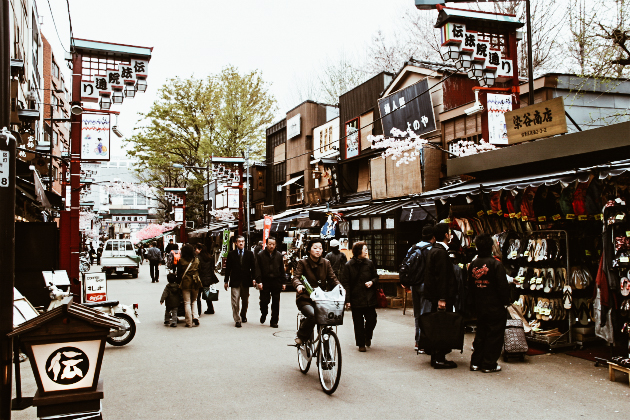
photo credits: ar.jal.co.jp
Asakusa, with its picturesque streets, offers history and culture without precedent. This neighborhood allows its visitors to immerse themselves in what used to be the old Tokyo of the Edo period. Traditional restaurants, inns, and shops where crafted souvenirs can be found everywhere. The center is the Sensōji temple, dedicated to Kannon Sama, the Buddhist goddess of mercy, the oldest place of worship in Tokyo.
Charm at great heights: the romanticism of Ebisu
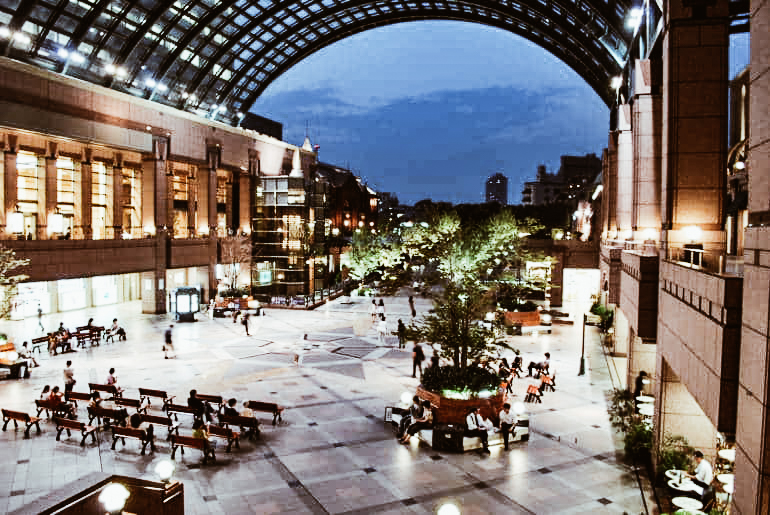
photo credits: tokyocheapo.com
One of the Yamamote Line stations is Ebisu, a district of Shibuya with its tall skyscrapers. Here we also find the Yebisu Garden Place, a tower with European architecture, whose entrance is free. Surrounded by squares and gardens, here you can dine in a restaurant that looks like a French castle and you can fall in love with a breathtaking view of all of Tokyo. Ebisu is also home to the Mitsukoshi department store, the Beer Museum and the Tokyo Photographic Art Museum.
Extravagant nightlife: Roppongi & Shinjuku
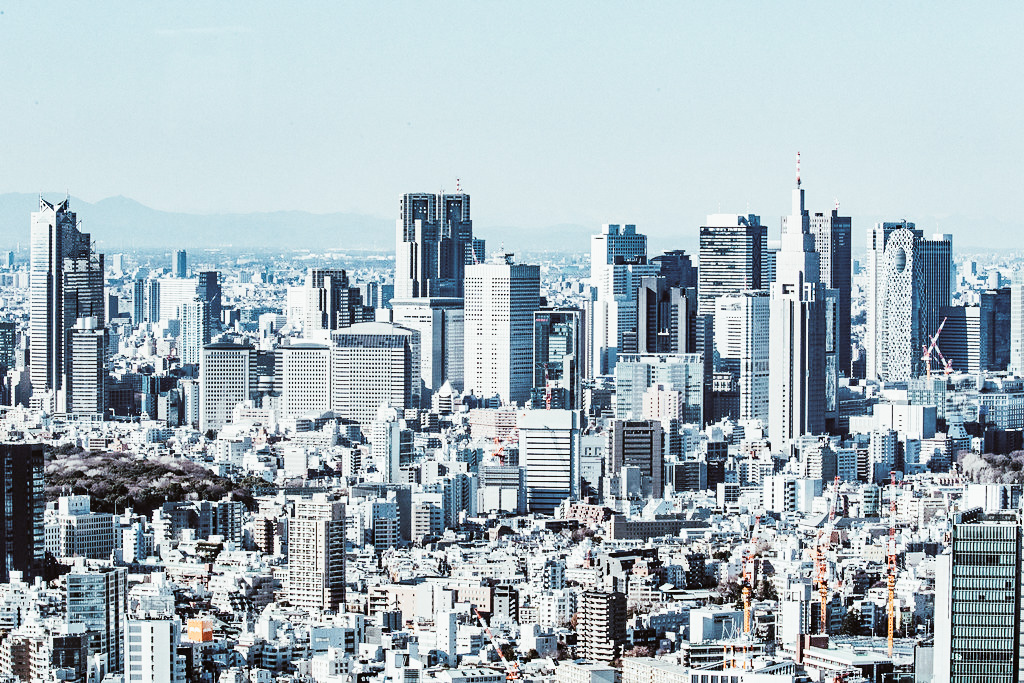
photo credits: flickriver.com
Roppongi is the neighborhood that, par excellence, hosts bars, izakaya and restaurants that offer any type of cuisine. Roppongi is especially known for the Roppongi Hills, a gigantic complex that includes offices, apartments, shops and restaurants. But also cinemas, parks, a museum, a hotel, a television studio, and an outdoor amphitheater. At the center of this whole area stands the Mori Tower, a 54-story building.
Even more "outside the box" is Shinjuku, whose nightlife is vast and in some ways even perverse thanks to Kabukicho, the famous red-light district and the Golden Gai, a maze of narrow streets lined with an impressive number of tiny bars.
Far from the frenzy: Meguro
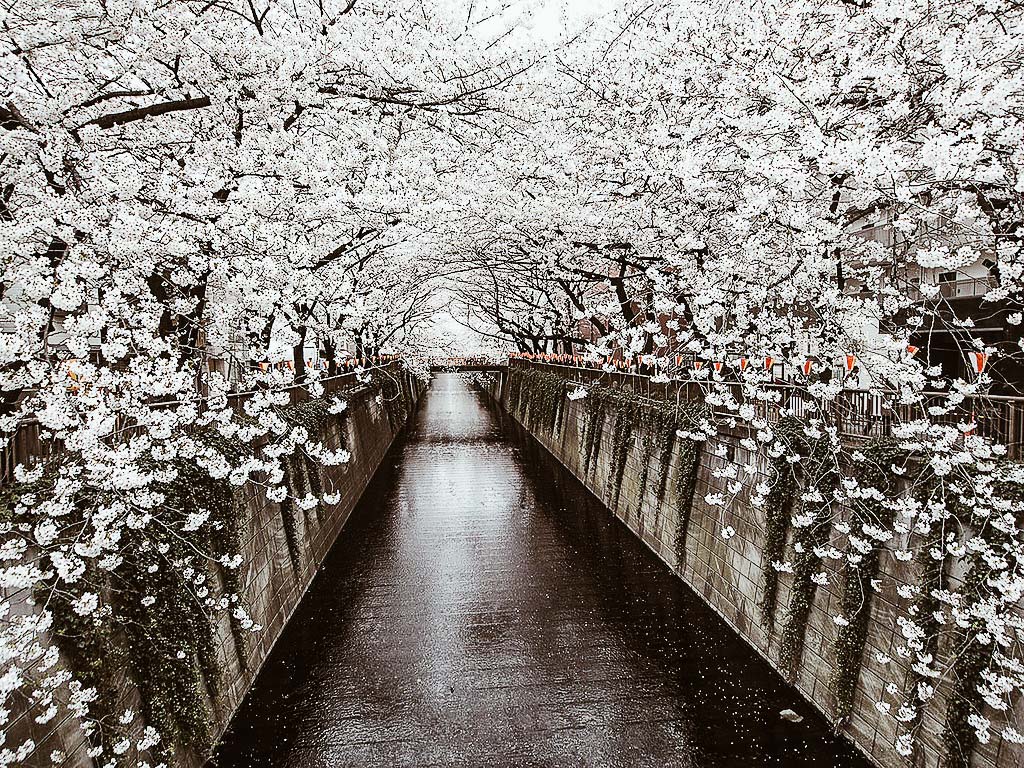
photo credits: realestate.co.jp
Predominantly residential, metropolitan life pauses in Meguro and the atmosphere is hipster. Here there are unique boutiques, elegant cafes, restaurants and vintage shops. However, what makes it all magical is the tree-lined area along the Meguro River. Here in spring the cherry trees give this neighborhood a rosy and extremely relaxing hue in which to enjoy a traditional picnic.
Kids will love Odaiba
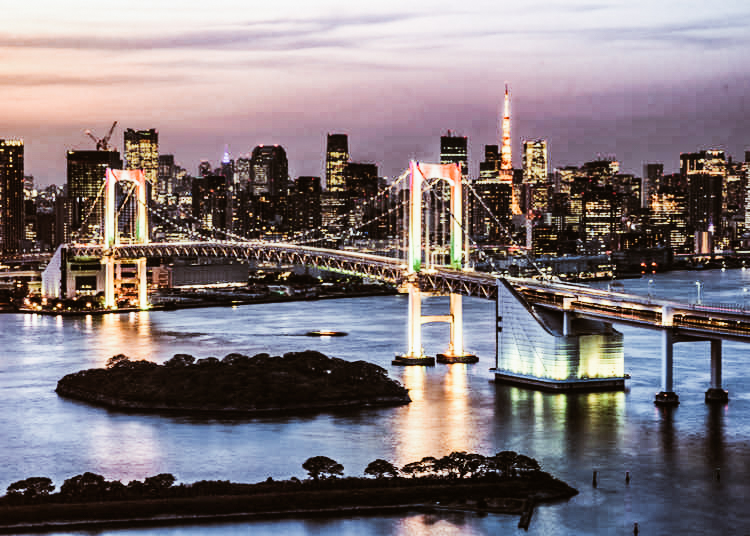
photo credits: livejapan.com
There is no place more suitable then Odaiba for families. This artificial island offers plenty of entertainment for children of all ages. In fact, here we find the Toyota Mega Web, the famous Miraikan museum, Joypolis, Legoland and many shopping centers, overflowing with restaurants for every taste.
For lovers of luxury and food, nothing is comparable to Ginza

photo credits: gotokyo.org
There is no neighborhood known for its luxury shopping area like Ginza. Here we can find famous (and expensive) shops, but also department stores that, in the basement, host truly unique food shops. Moreover, Ginza is also famous for its restaurants that range from French haute cuisine to fusion dishes. But also for small izakaya and sophisticated cocktail lounges. In short, if you love drinking and eating and you want to devote yourself to gastronomic tourism, this is for you!
Fashion, dynamism and transport: Shibuya
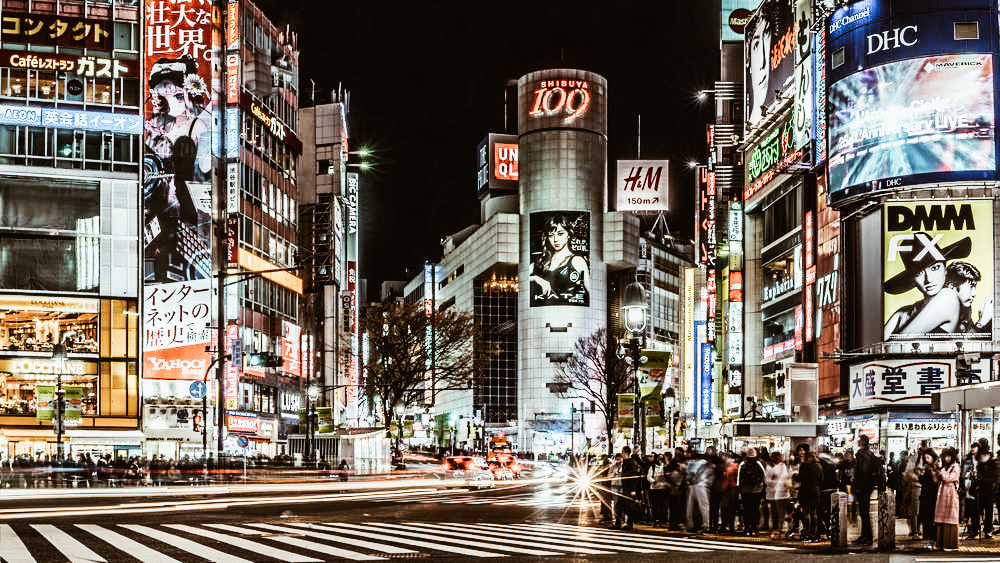
photo credits: photo-collection.geo.fr
Want to experience the real frenzy of Tokyo? Shibuya will not disappoint you! This is in fact one of the most dynamic areas of the city. Constantly illuminated by the giant screens that are present on all the buildings, it is also the most colorful and characteristic area thanks to the young people who are dedicated to the art of cosplay. Not to mention the ganguro fashions (flashy and kitsch alternative clothing) and kogal (clothing and makeup are flashy and inspired by the West, exasperating our characteristics). Shibuya is one of the largest transport hubs in the country. From here, trains, metro, and highways will allow you to get anywhere at any time!
After reading each neighborhood's offers, which of these areas correspond to your personality? What do you look for in your stay in Tokyo? Write us your opinions and tell us about your experiences related to one of the most beautiful cities in the world!
Travel guide: Tokyo - Episode 02 - Shopping guide
Traveling is a unique experience that allows us to broaden our cultural background and come into contact with realities that are more or less distant from ours. In the same way, however, one of the most widespread customs is that of returning home, bringing back even material memories.
For this reason, in this new episode of our special guides, we want to show you where, how and what to buy in Tokyo!
We do not want to nourish the spirit of consumerism in you, but rather to lead you on the path of unique, cute, useful, necessary, satisfying purchases. In fact, the human being also needs to feel pampered and to spend some extra money for the sake of it.
So here is our little trip to the Tokyo shopping world!
Walking through Asakusa: Nakamise Dori

photo credits: thejapanesedreams.com
The Nakamise Dori is one of the most characteristic pedestrian shopping streets in Asakusa. Lined with numerous stalls where you can find traditional souvenirs and snacks, it is a perfect stop for last-minute purchases. The shops that line the street are a real paradise for those looking for washi, the Japanese paper for origami.
In the heart of Shinjuku: Okadaya
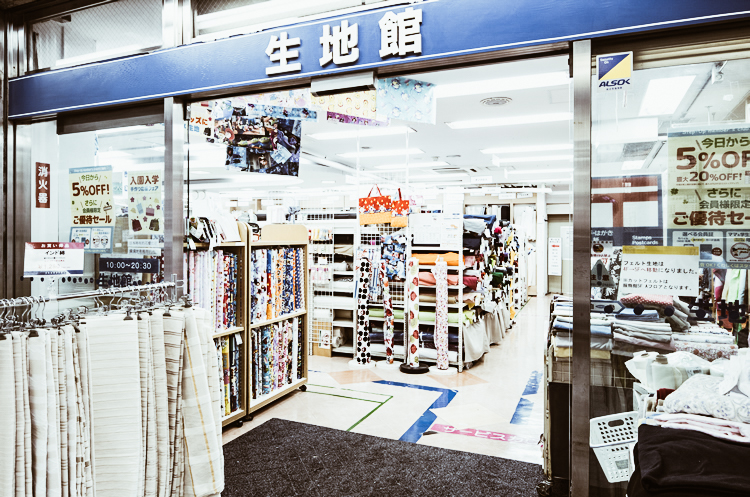
photo credits: shinjuku-guide.com
The Okadaya store offers 6 floors of craft items, yarns, sewing kits, DIY guide books, linings, traditional Japanese materials, and other special fabrics. A destination much loved by students attending the design and fashion school nearby!
100 Yen or so: Daiso
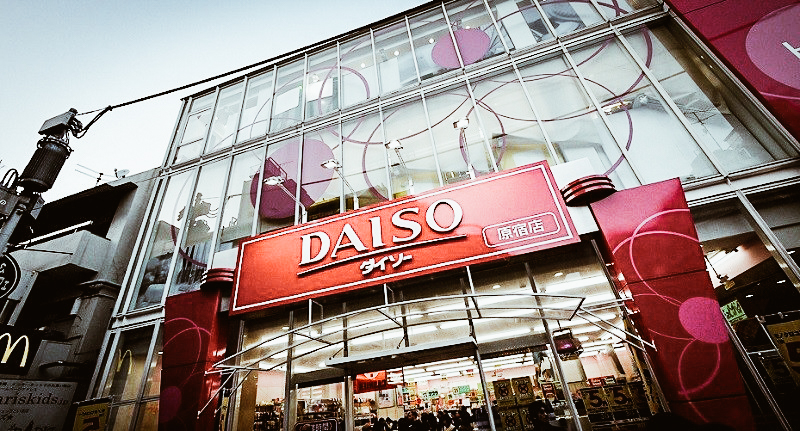
photo credits: planetyze.com
Daiso today is a brand known in many countries around the world and there are plenty of shops throughout Japan. In Tokyo, it's the ideal place to spend little and find a lot of objects more or less useful, cute, funny, particular and so on. Despite the extremely low cost, they are of a surprising quality!
Cuteness overload: Aranzi Aronzo, Character Street, Sunshine City e Yamashiroya

photo credits: matcha-jp.com
In the Tokyo sky tree shopping center, Aranzi Aronzo was opened, a store where everything is "cute, strange and cuddly". Here we can find tender characters in the form of toys, household items, stationery, accessories and craft books.
On the lower level of the Tokyo station, from the Yaesu and Marunouchi exits, the Character Street peeps out on First Avenue. It is an entire commercial street overflowing with shops dedicated to the most beloved characters in Japan. Here we find Hello Kitty, Rilakkuma, Totoro, Miffy, Tamagotchi, Rement, and Pokemon! Also at the Okashi Land, it is possible to stock up on the most famous sweets and desserts known as Pocky!
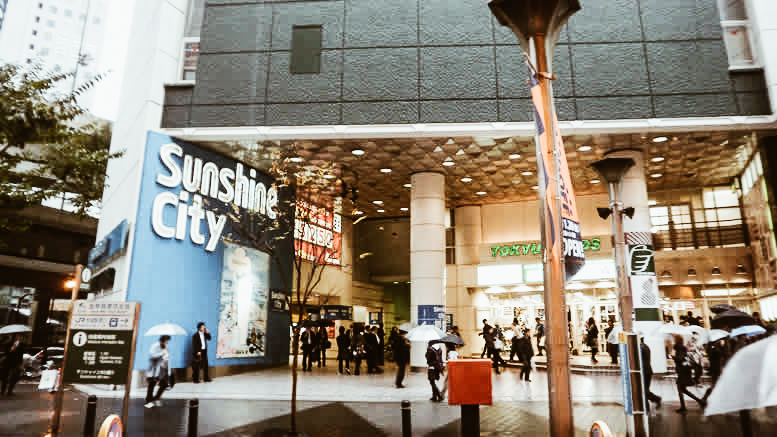
photo credits: happyjappy.com
Instead, near the Ikebukuro station, there is a skyscraper of 60 floors inside which we find two shopping centers! In Sunshine City, there are wonderful shops like Donguri Kyowakoku, where you can find anything with a Studio Ghibli theme. And let's not forget about Dagashiya, where you can buy all kinds of sweets in lovely packages. HAPiNS, where you can find unique and delicious utensils and objects for the home and the plush toys of Hannari Tofu and Alpacasso. In addition, we also find the Pokemon Center, the Sanrio Vivitix, Kutsushitaya, the Village Vanguard, Swimmer. In short, there is certainly plenty of choice!
Yamashiroya is right in front of the entrance to Ueno station. A splendid store of 6 floors to be explored that offer all kinds of toys, collectors' items, action figures. But also stuffed animals of every kind and brand, souvenirs and lots of gacha-machines that supply some of the most beautiful gashapons!
The Creative Life: Tokyu Hands
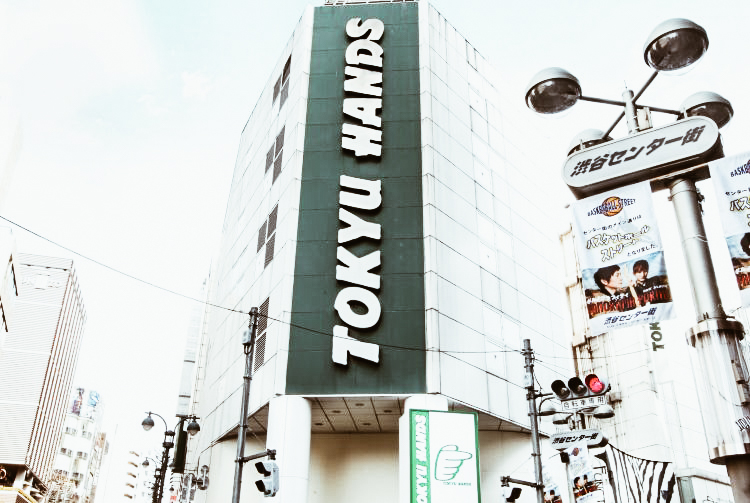
photo credits: gotokyo.org
The Tokyu Hands has really many branches scattered around Japan and here in Tokyo, they are easily traceable to Ikebukuro, Shibuya, and Shinjuku. It is the store par excellence where you can really find everything and everything typically Japanese! Whether they are creative, artistic and craft items, household items, beautiful stationery. Or suitcases, pots, furniture or tools for DIY, Tokyu Hands is a paradise. This is probably the place for which I would recommend an absolutely mandatory visit!
Which of these stores struck you most? Do you already have in mind a list of things that you absolutely must buy once you arrive in Tokyo? I believe that you will go crazy and you will probably spend money on absurd objects that you never thought you needed ... at least until that moment!
Travel Guide: Osaka
Let's continue the through among the prefectures and cities of Japan and today we take you to Osaka!
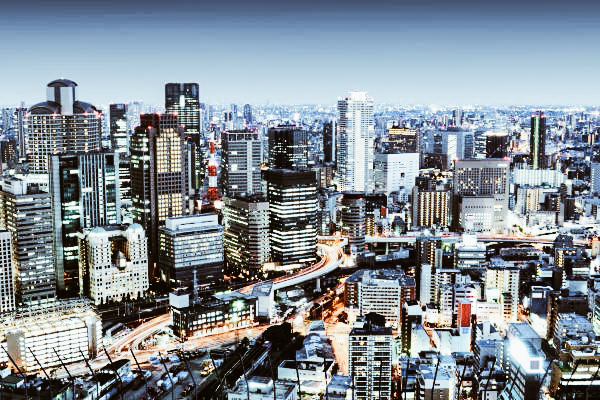
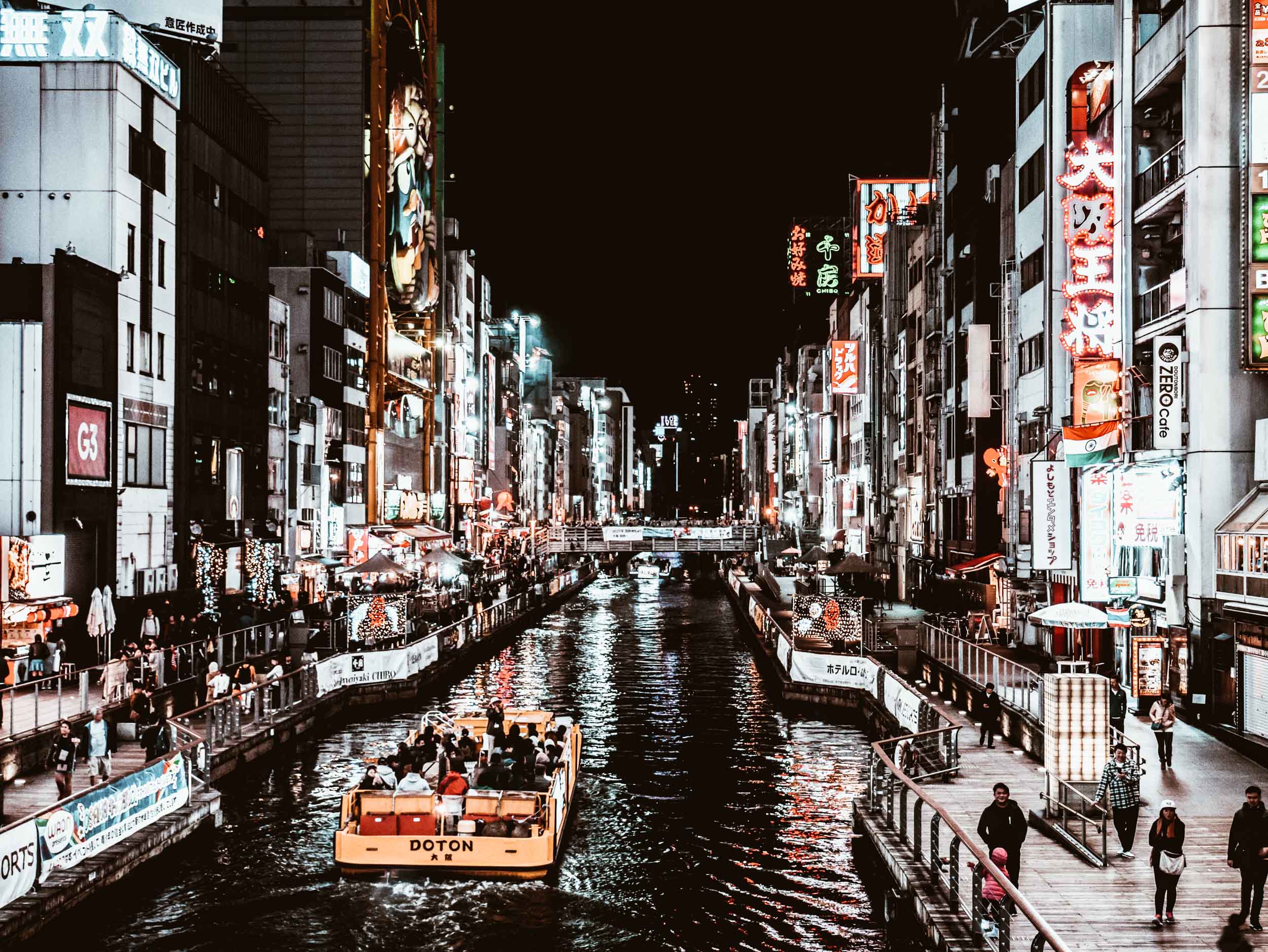
photo credits: easyviaggio.com
The ancient capital
During the Tokugawa period, from 683 to 745, Osaka (大阪) was the capital of Japan with the name of Naniwa (難波). However, during the Meiji era the capital was moved to Tokyo. Subsequently, Osaka became the center of land, sea and river transport thanks to the entrepreneurs who took command of industrial development. During the Second World War, the city was razed to the ground, but the great Japanese spirit did not allow its defeat. In fact, Osaka was rebuilt more prosperous than it ever had been.
Today Osaka is considered as "the cuisine of Japan". Moreover, it is an important economic and port center, as well as the third most important city in the country.
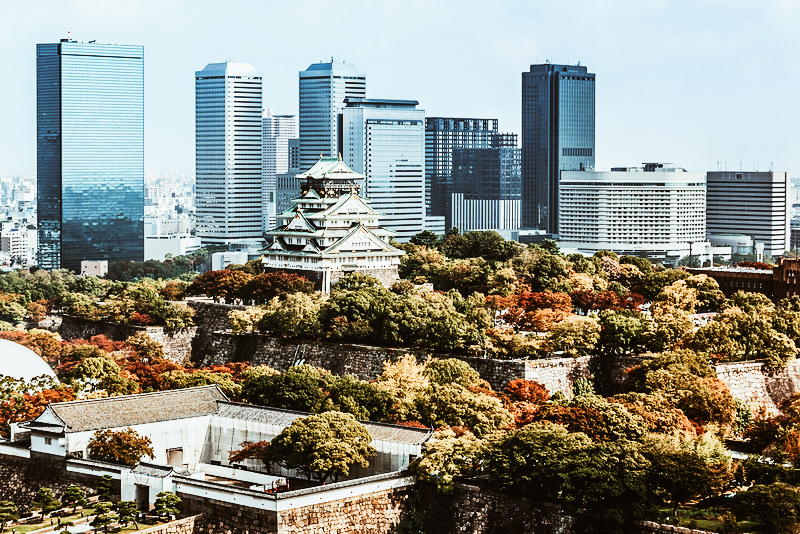
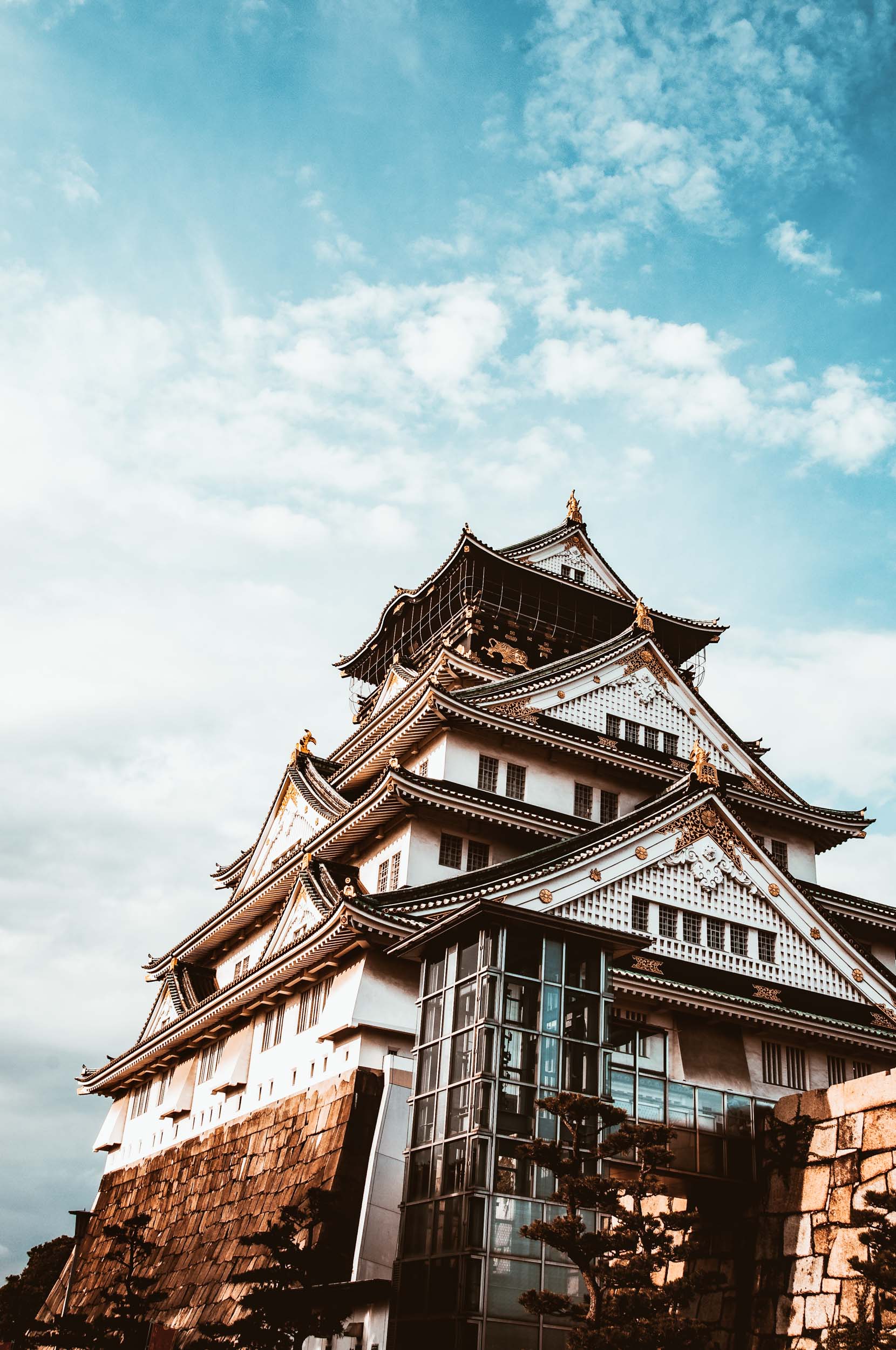
photo credits: https://www.shutterstock.com/g/cowardlion
Falling in love with Osaka
Holder of unique charm, Osaka is a city that must necessarily fit into your wish list as it will make you fall in love in a short time!
A fundamental stop is the Osaka Castle, a place so loved during the Hanami period thanks to the 600 cherry trees that surround it. The castle built in 1583 by Toyotomi Hideyoshi is considered one of the most important historical attractions in Japan!
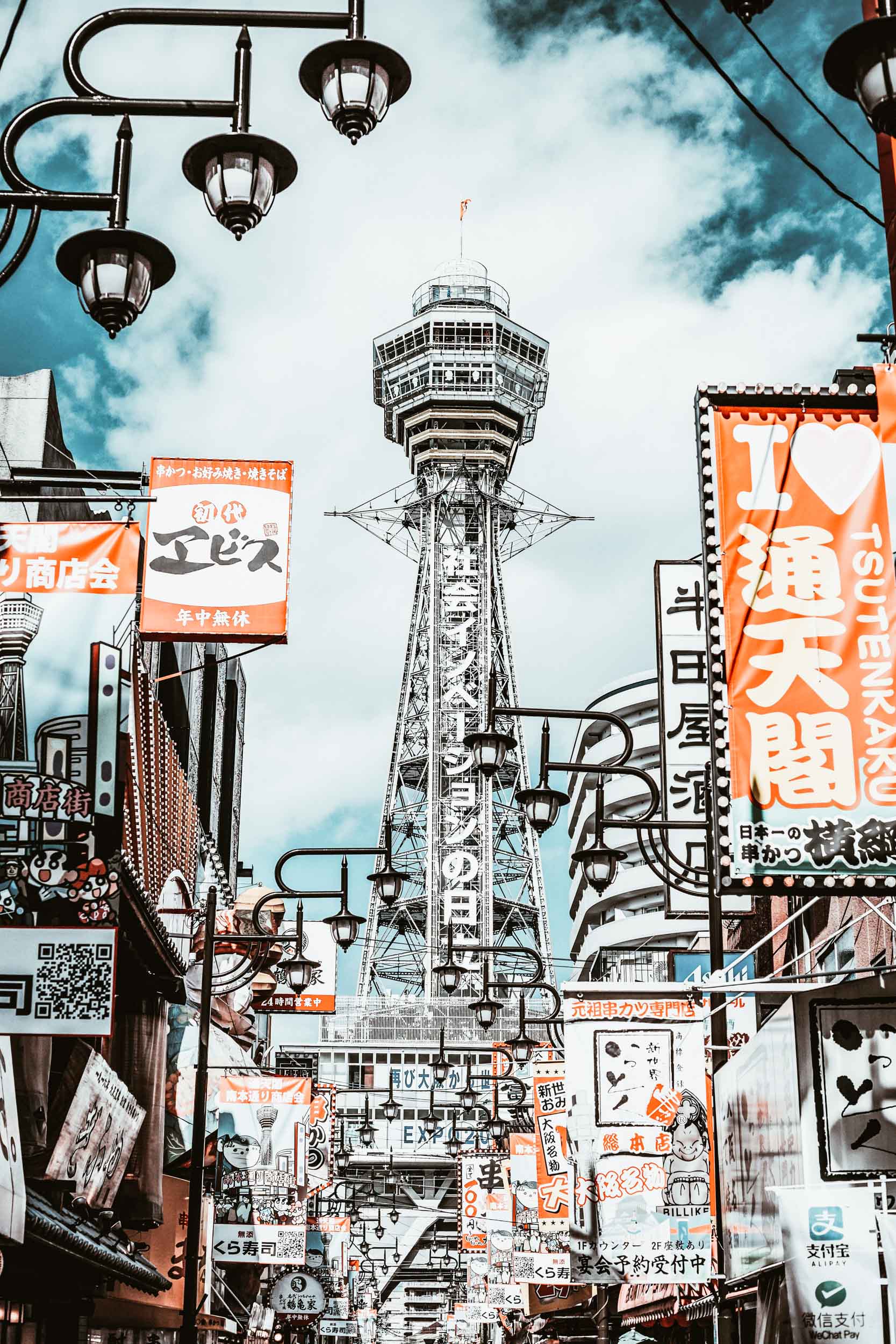
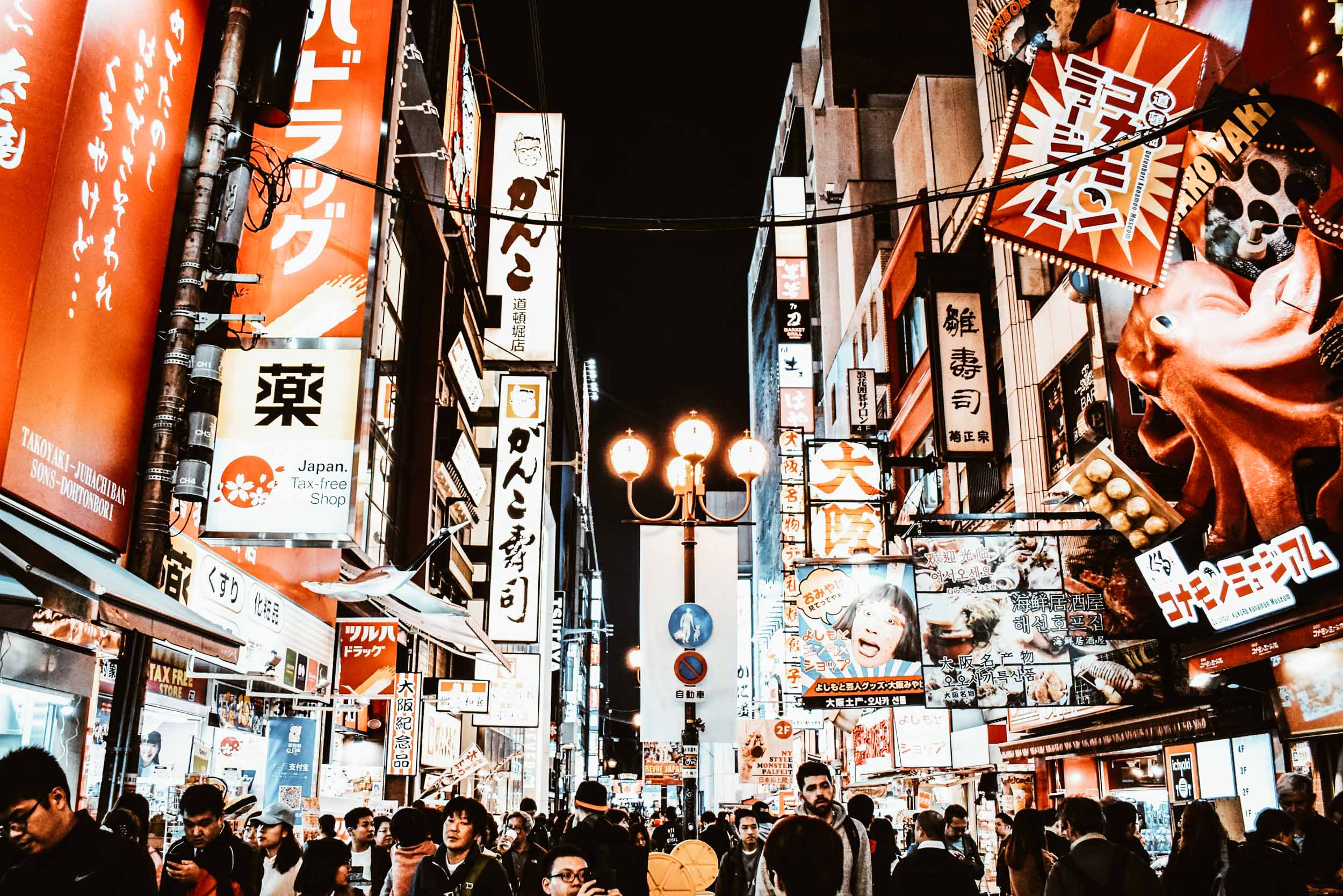
If you love breathtaking views, the Umeda Sky Building will make you dream with its 360-degree view of the entire city. From its ultramodern observatory located 173 meters high, it is indeed possible to take breathtaking photos! In addition to Umeda you can devote yourself to shopping thanks to its spectacular shopping malls. Moreover, remaining in the theme, if you can not resist the shopping idea, you can go to Shinsaibashi. Shopping district par excellence, every tourist crosses the 600 meters of the Shinsaibashi Shopping Arcade with its numerous boutiques, retail stores, and luxurious department stores!
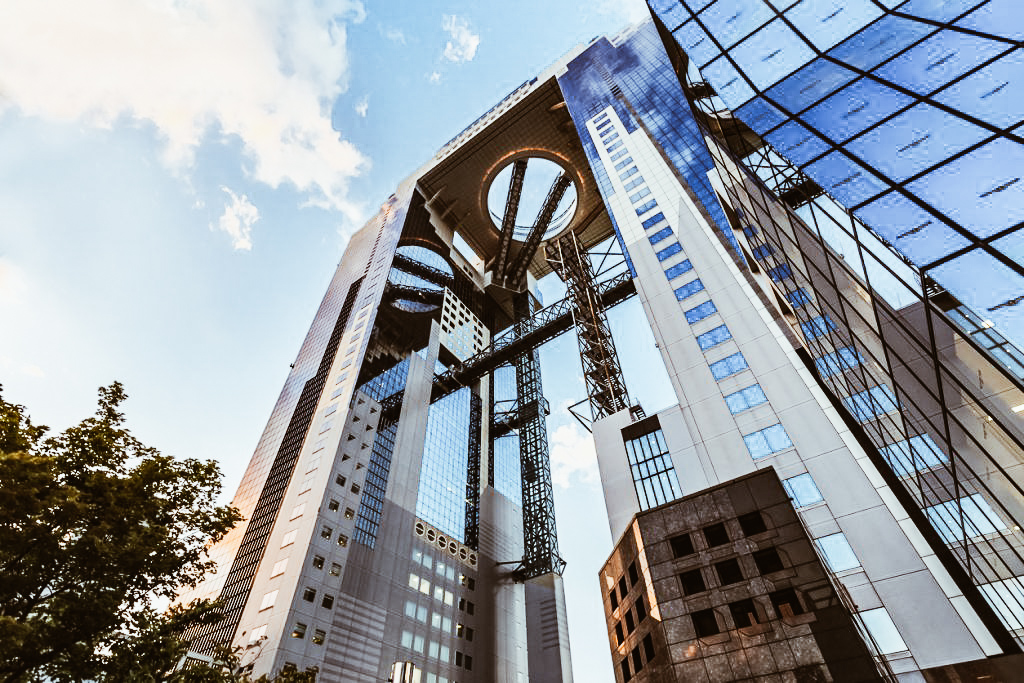
photo credits: gaijinpot.com
We said that Osaka is considered the "kitchen of Japan", for this reason, you should definitely visit Dotonbori. Glico Man (Glico is the name of the famous candy company that produces Pocky) will welcome you!

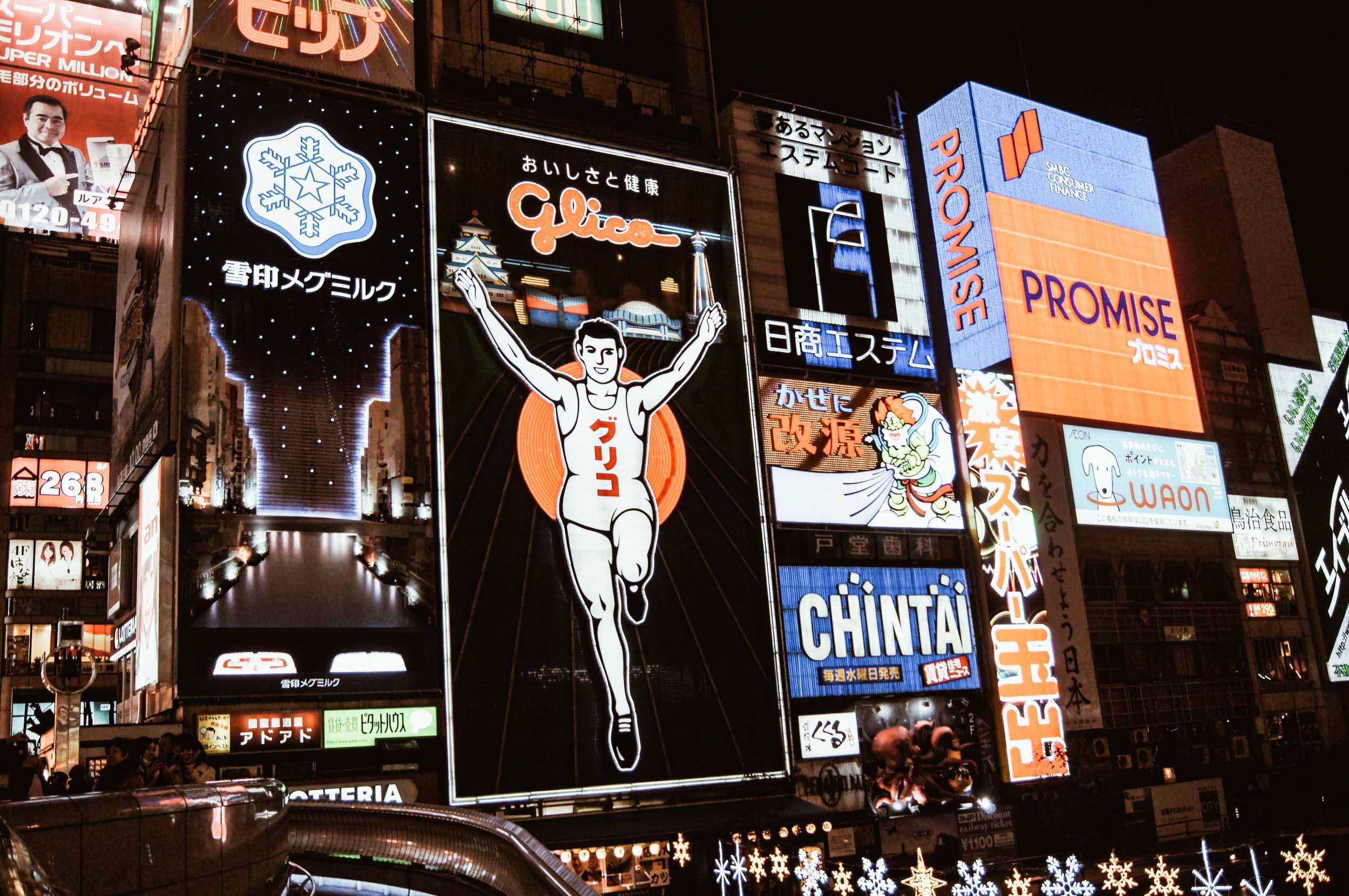
photo credits: favy-jp.com
This giant was installed in 1935 and has become the landmark of Dotonbori.
About 30 years later the mechanized crab of the Kani Doraku restaurant was built. This place serves all kinds of crab followed by Zuboraya and Kinryu Ramen, the most famous restaurants in the neighborhood.
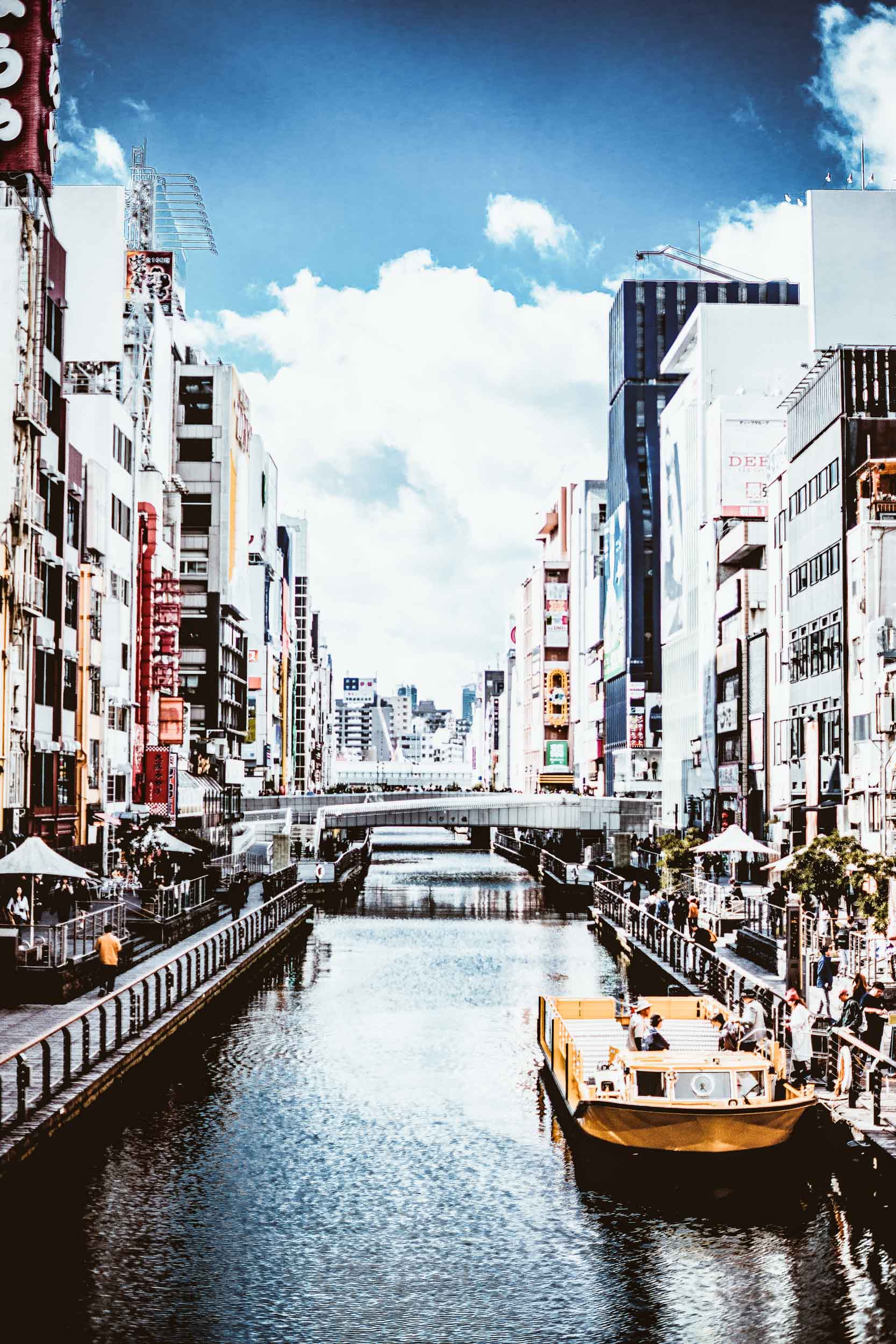
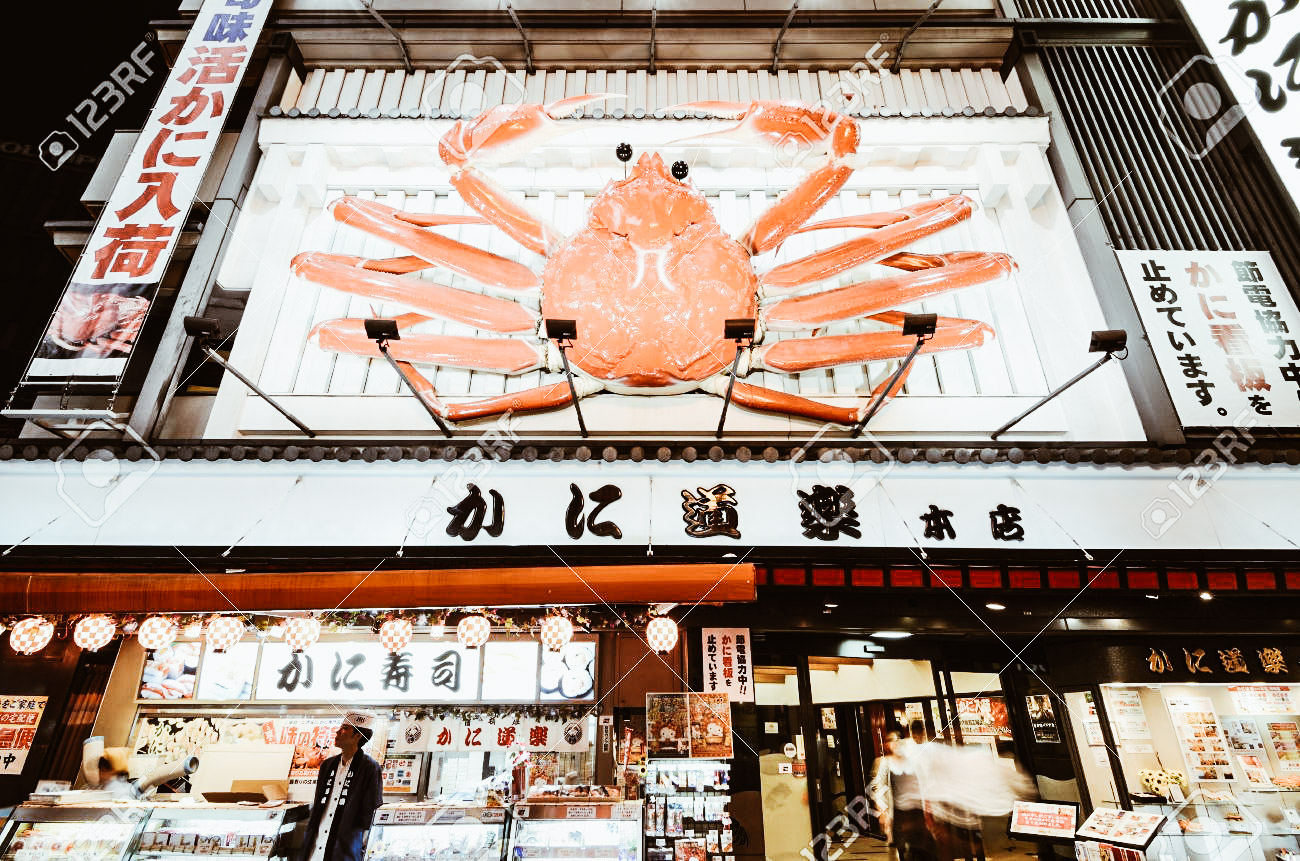
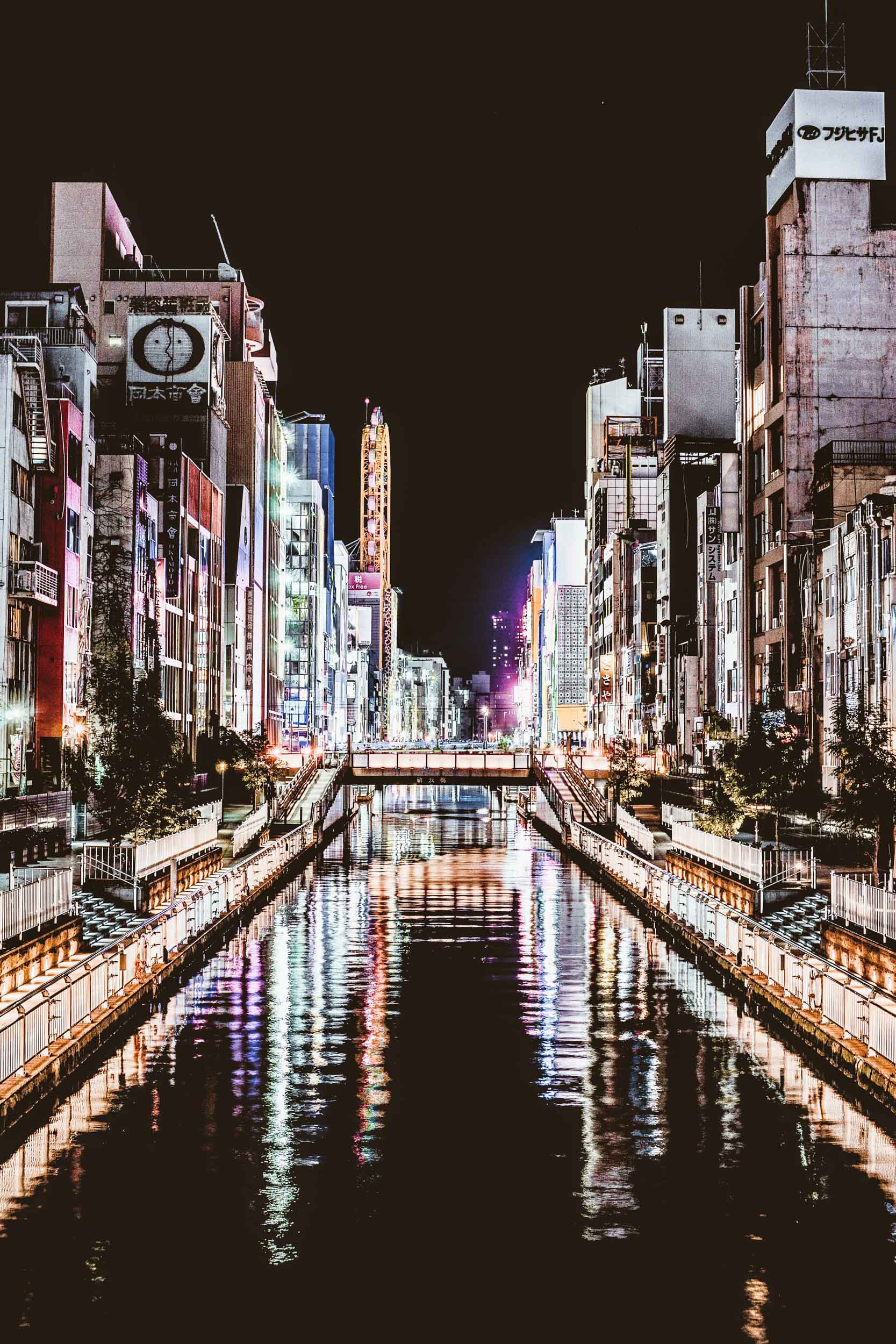
photo credits: 123rf.com
If you love museums, you cannot give up the Naniwa Rekihaku, the Osaka History Museum. Housed in a building with ultra-modern features, its specialty is that the visit to the museum starts from the tenth floor, the last one! From ancient Japan, the various floors dedicated to the various historical periods of the city are discovered in descent. Finally, we arrive at the first floor where there are the inevitable souvenir shops.
In the Edo period, Osaka was also the capital of Bunraku. This is a form of theatrical performance characterized by the use of puppets that entertained both the nobility and the population. Bunraku shows are generally held in January, April, June, July, August, and November in specific weeks. Please check the information on the National Bunraku Theater shows here: https://www.ntj.jac.go.jp/bunraku.html
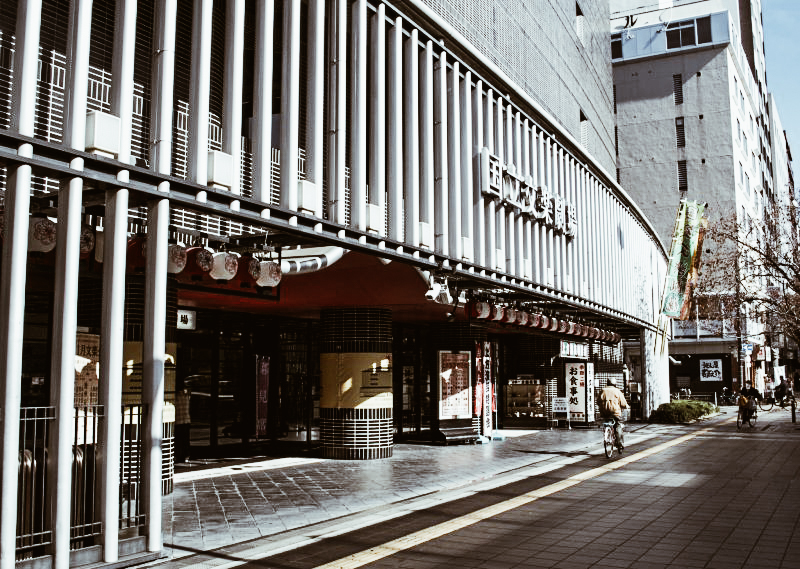
photo credits: japantravel.com
And if after all of this you feel like having fun, a visit to the most beloved park in Japan is a must! We are talking about Universal Studios Japan (ユニーサルスタジオジャパン). The park is divided into 9 thematic areas: Hollywood, Universal Wonderland, The Wizarding World of Harry Potter, Amity Village, Waterworld, Jurassic Park, San Francisco, Minion Park and New York. For all information and details, please refer to the official website also available in English: https://www.usj.co.jp/e/
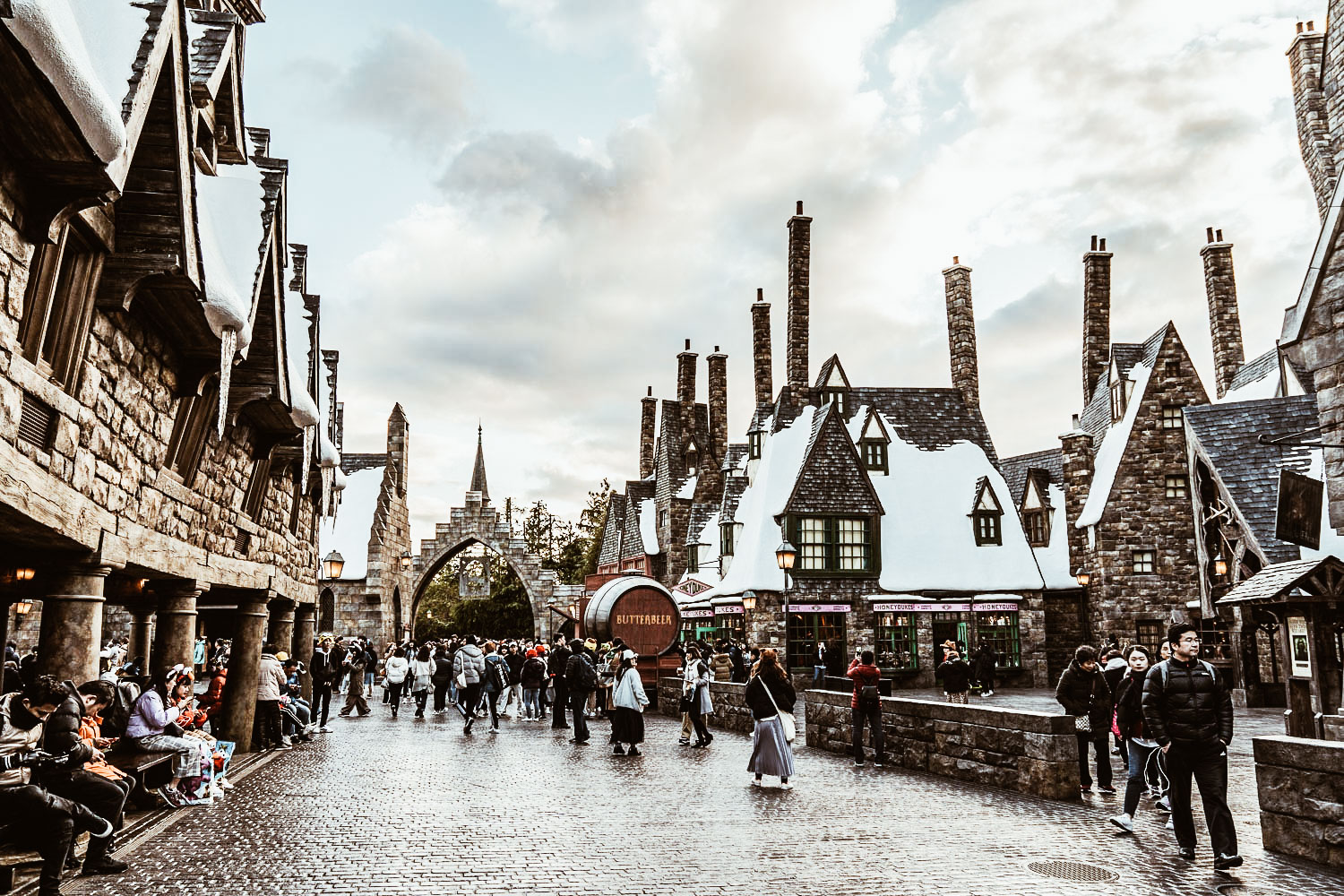
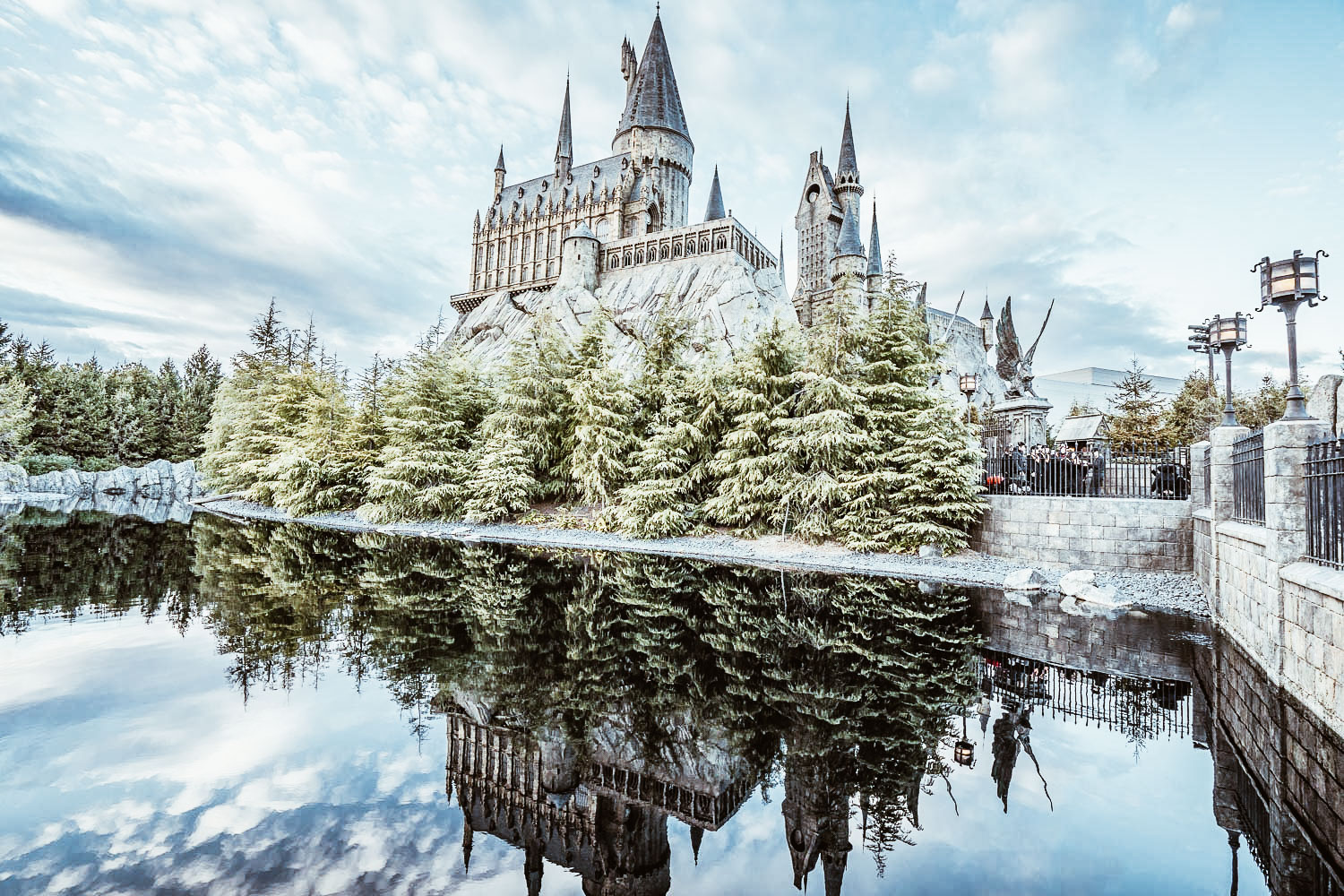
photo credits: neverendingvoyage.com
Have we managed to intrigue you? Or have you already visited Osaka and fell in love with it? Tell us all your impressions! There is nothing more beautiful than memories to share a dream.
Journey through Kumamoto
In the Kyushu region stands Kumamoto (本市), surrounded by mountains and with its landscapes created by the volcanic activity of Mount Aso.
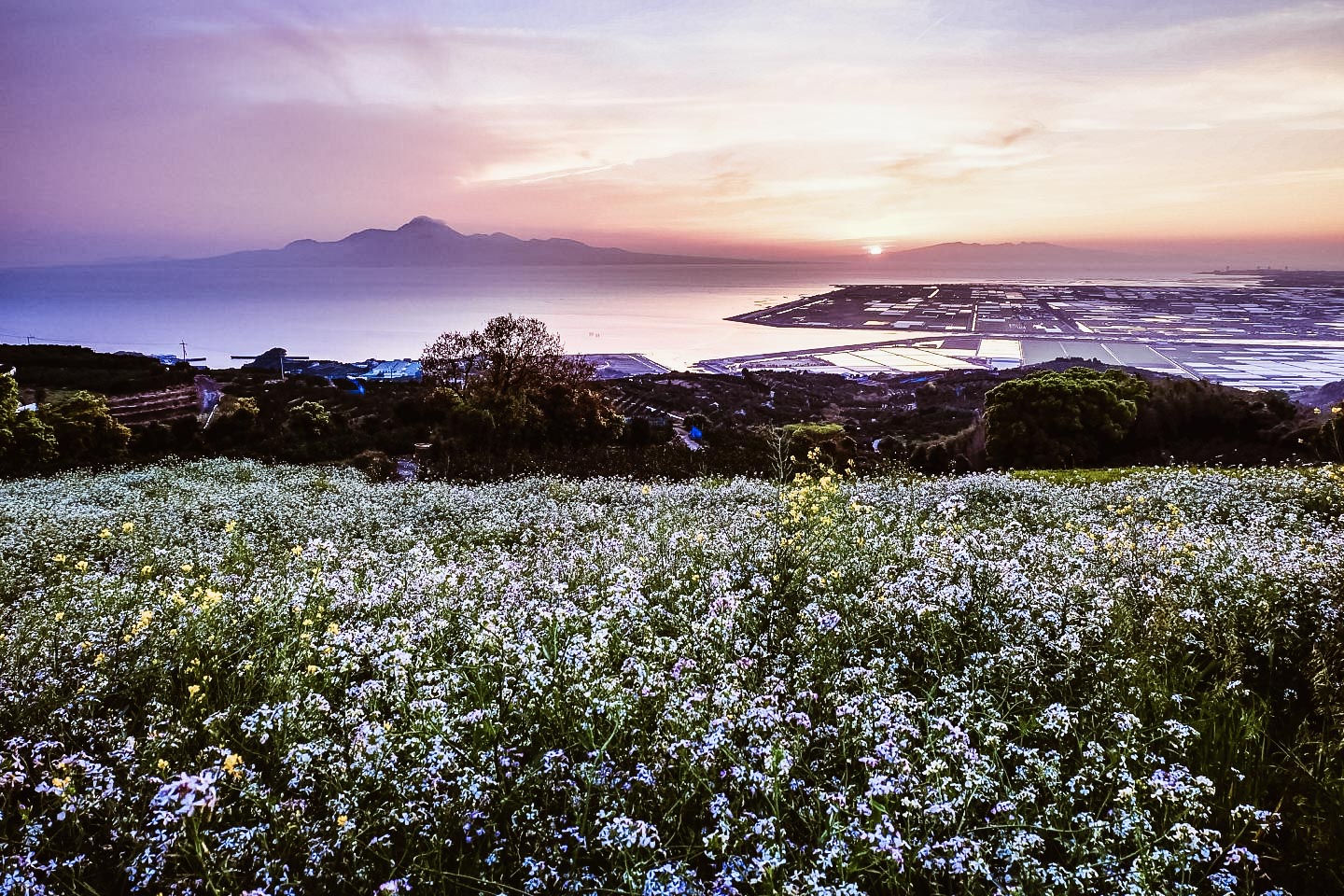
photo credits: japantravel.com
When we think of this city, the immediate reference is that of the black bear with red cheeks: Kumamon (くまモン). A true symbol of the prefecture that has become its own mascot, Kumamon also helps promote tourism in Japan and abroad with the "Kumamon Square"! (official website in Japanese and English: https://www.kumamon-sq.jp/en/)
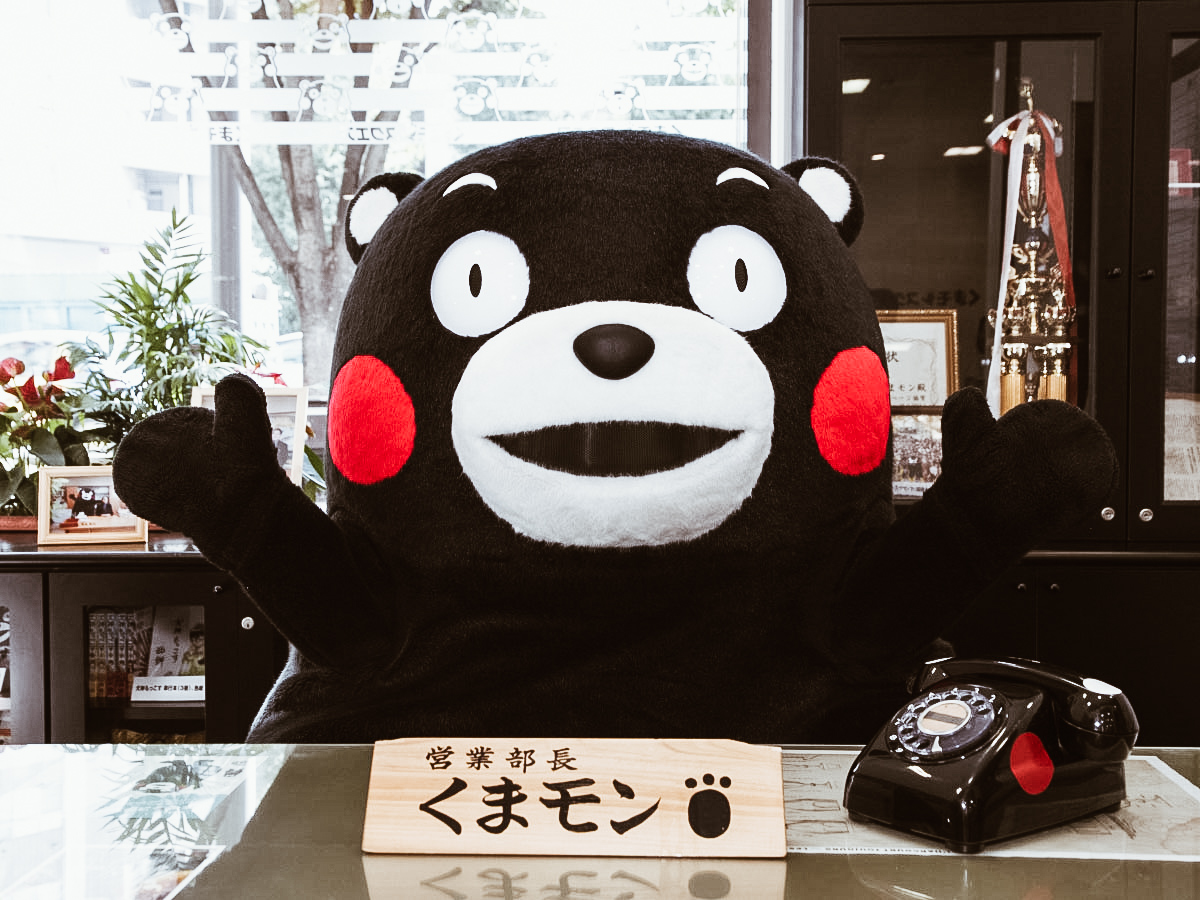
photo credits: kyushuandtokyo.org
The origins
During the Nara period, Katou Kiyomasa was named daimyō in 1588 and built the impregnable Kumamoto castle around which the village grew. The Kiyomasa clan was succeeded by Hosokawa's. In 1877, former Satsuma samurai rebelled against the Meiji government with the Satsuma rebellion. The Castle of Kumamoto remained under siege for 53 days between drying out and fires, even the town was razed to the ground. A little curiosity, the facts of the Satsuma rebellion are narrated in the beautiful film "The last samurai".
The new political order was re-established in 1889, giving Kumamoto the role of an important economic and industrial centre of Kyushu. Thanks to this it obtained the title of "city designated by government ordinance" (政令指定都市) counting as many as 5 neighbourhoods within it. The districts of the city are Kita-Ku (北区) the northern district, Nishi-Ku (西区) the west district, Chūō-Ku (中央区) the city centre, Higashi-Ku (東区) the east district and Minami-Ku (南区) the southern district.
Unfortunately a violent earthquake struck the prefecture in 2016 causing enormous damage, but the great Japanese spirit did not allow its inhabitants to surrender and today Kumamoto is still shining.
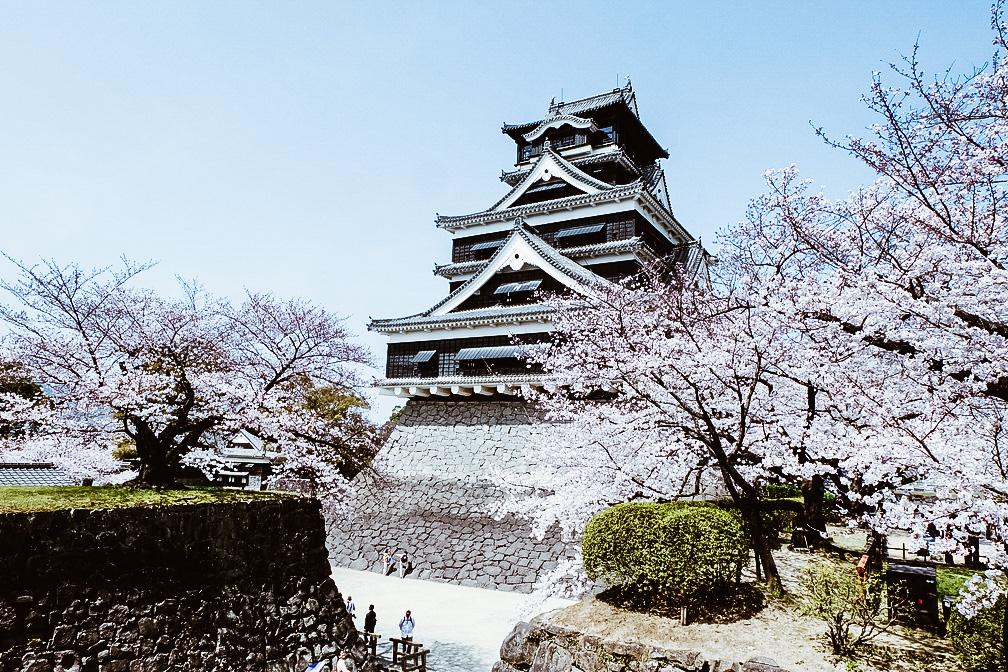
photo credits: zingarate.com
Explore Kumamoto
During the 60s and 70s, the castle underwent a massive restoration returning to its former glory. An unmissable stop is the Suizen-Ji Jōju-en garden built in 1636 by Hosokawa Tadatoshi. This serves as a retreat for tea thanks to the pure water of the pond. Inside there is the sanctuary of Izumi where members of the Hosokawa family are kept, a Nōgaku-dō and a Noh theatre. The Kokin-Denju-no-Ma teahouse was originally in the Kyoto Imperial Palace, but was moved here in 1912. The garden was declared a historic site of scenic beauty by the national government.
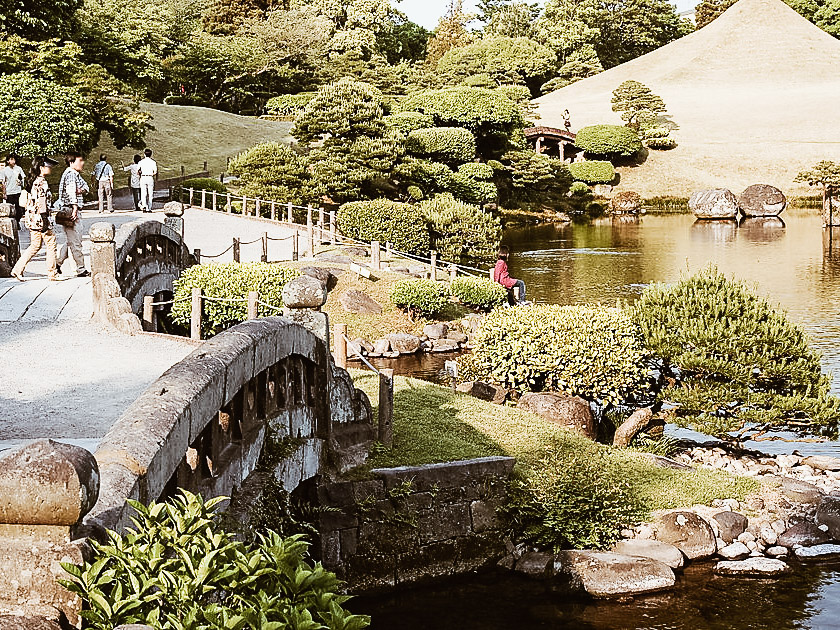
photo Credits: sygic.com
If you love museums, a must is the Kumamoto Prefectural Museum of Art. Just 500 meters from the castle, it houses several sections dedicated to modern Japanese, European and American art. In the museum, we find an area where the funerary objects found in the kofun (ancient burial mounds) and a last part dedicated to the finds belonging to the city are collected. Kumamoto is spectacular also thanks to its landscapes. In fact, one of the most magical places from which to enjoy breathtaking views of the entire prefecture is the Hanaokayama Koen park. Lake Ezu is located in the south of the city. This stretch of water is surrounded by an immense natural oasis in which to walk, fish, take a ride on the characteristic Japanese boats for hire, or do birdwatching. Staying with nature, it is interesting to visit the Kumamoto City Zoological Garden. Here we find 124 different species of animals, beautiful botanical gardens and a small funfair.
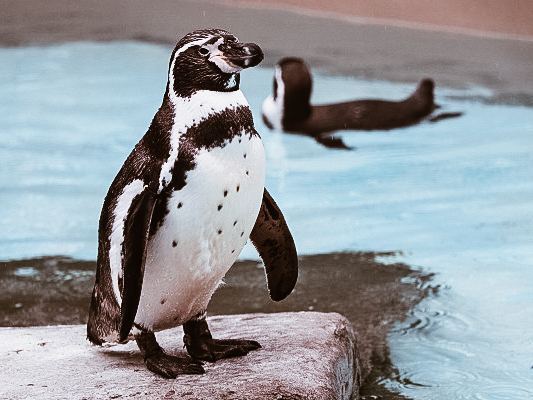
photo Credits: zoosinjapan.blogspot.com
There is a place that it is worth visiting: the Reigando cave (霊巌洞). Sacred and mysterious, this cave rises at the foot of Mount Kinpo. This place has achieved fame mainly because here the philosopher Musashi Miyamoto composed the treatise on martial arts "Go Rin No Sho" (The Book of Five Rings. But not only that, it is here that over the centuries, monks, poets and warriors they went to meditate.
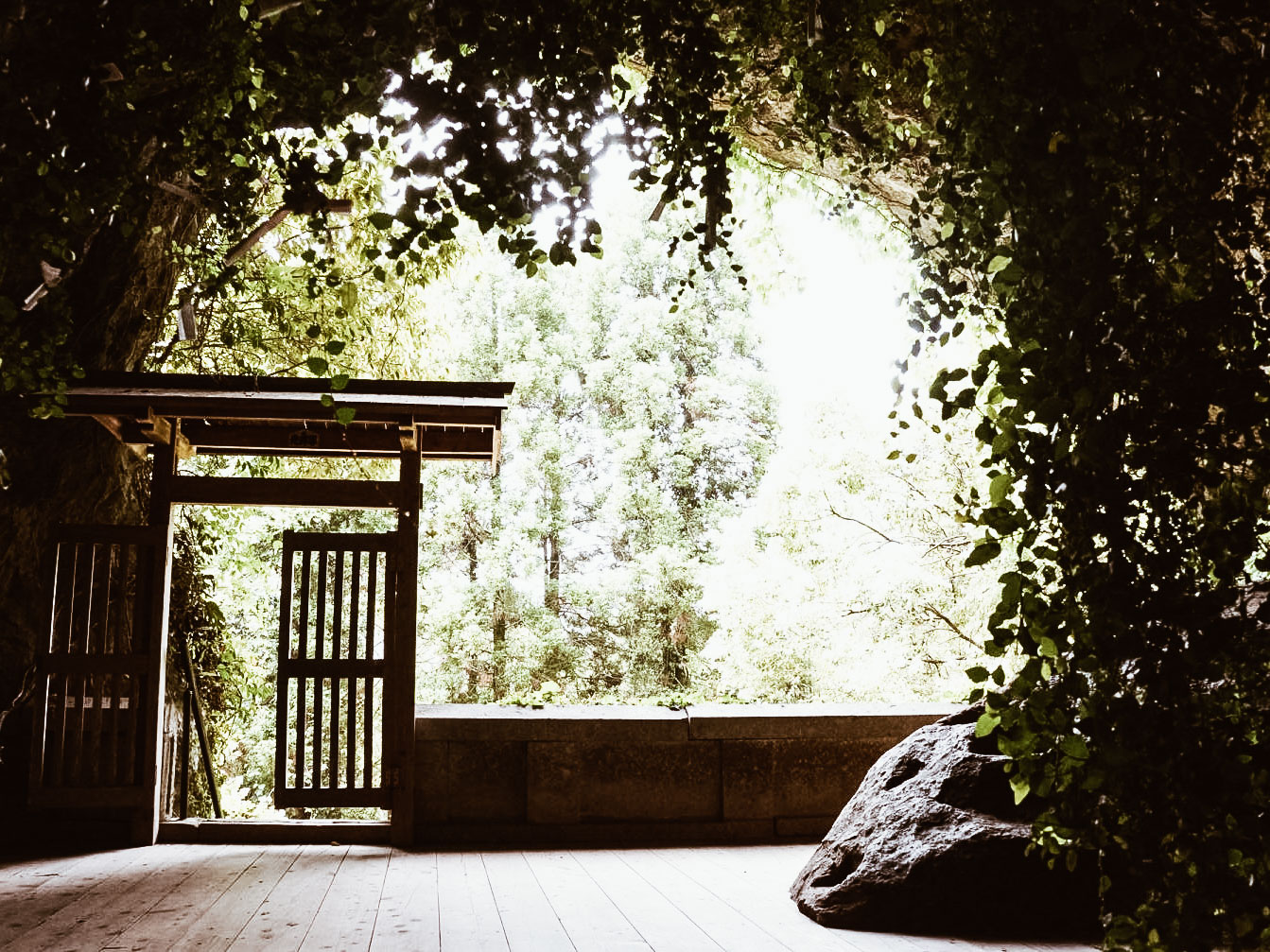
photo Credits: kumamoto-guide.jp
To reach Reigando it is necessary to cross the Zen Buddhist temple of Unganzenji. The path consists of a steep stone staircase to the sides of which 500 unique statues of the enlightened followers of Buddha unfold. At the end of the path opens the entrance to the cave that overlooks the forest. At the back of the cave is the four-faced goddess Iwato Kanon. It is said that the statue was mysteriously washed in the cave 1000 years ago after the ship that transported it sank.
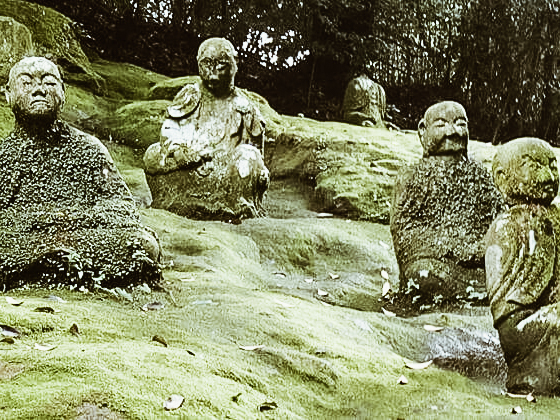
photo Credits: japanshoreexcursions.com
Spiritual and relaxing, Kumamoto can really give its visitors a lot and absolutely deserves to be visited and loved, like every city in Japan.
Travel guide: Tokyo - Episode 01
Can you ever imagine Tokyo as a modest fishing village? Probably not. Like so many other cities in the world - the atmosphere that was breathed in the Edo period was quiet and very far from today's frenzy. It was only when the emperor moved from Kyoto to Tokyo, after 1868, that the city radically changed his identity.
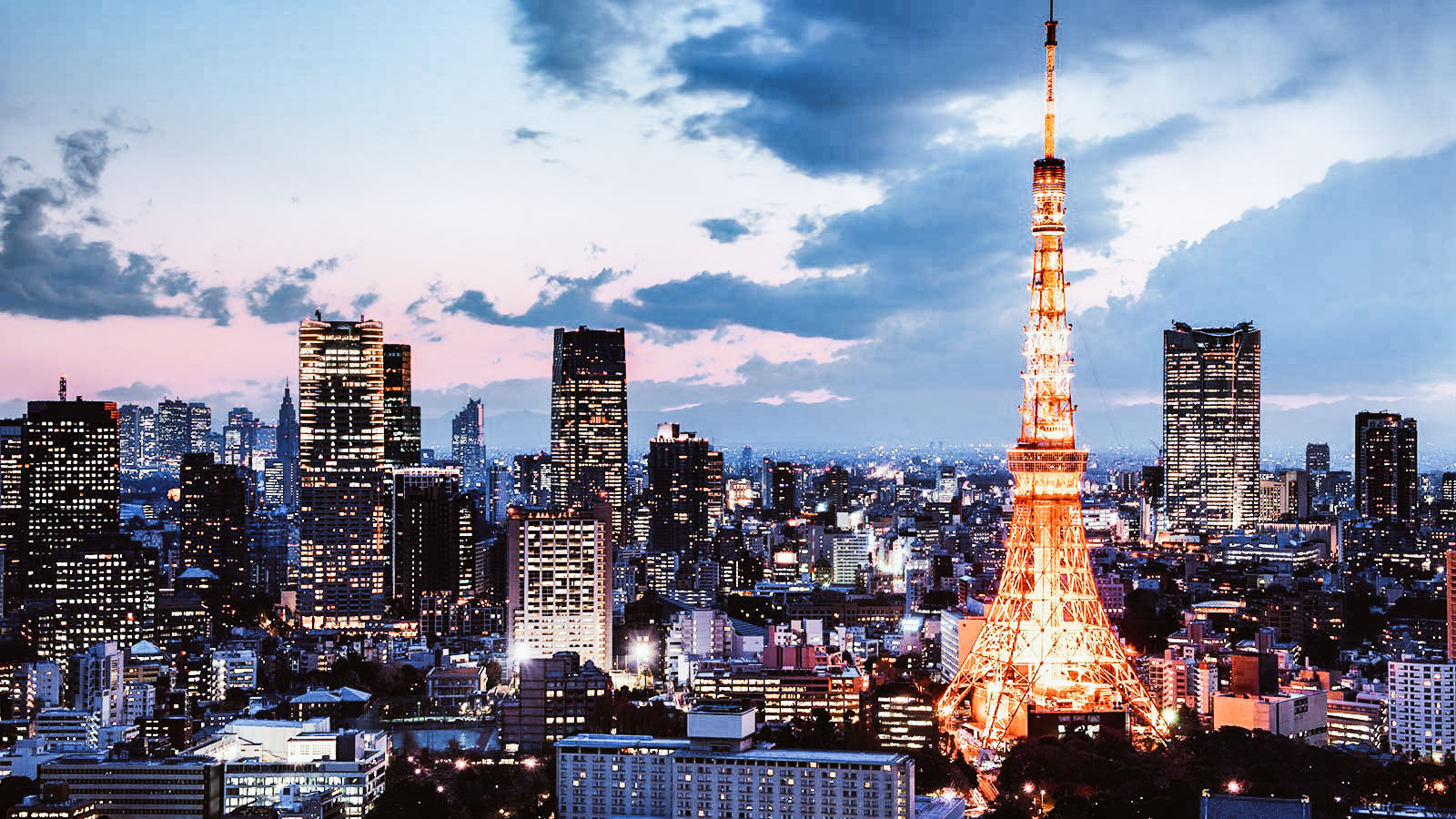
photo credits: visa.com.au
Today Tokyo, with its 23 districts, is the largest megalopolis in the world, a conglomeration of cities, lights and colors fused together that continue to amaze visitors.
Walking around the capital is an almost otherworldly experience. From the very crowded streets, you could turn the corner and find yourself suddenly in an oasis of serenity near some shrine or Shinto temple. Or, decide to venture out shopping in stores that sell strange and wonderful things, or take the subway (or train) and reach incredible places!
In our blog, you will find many articles that focus on Tokyo neighborhoods. However, what we want to suggest to you today are those unusual, unique and extravagant activities that, for those visiting the city for the first time, could turn into unforgettable experiences!
Admire Tokyo in its vastness
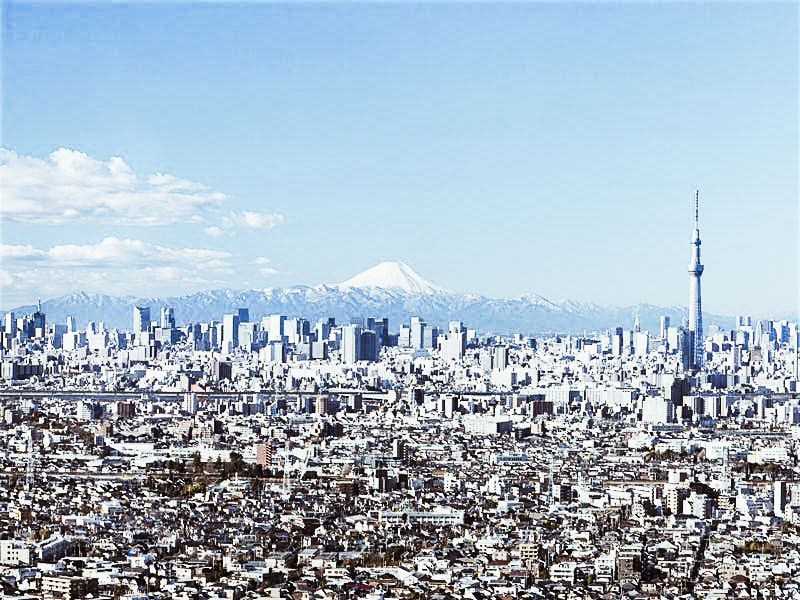
photo credits: lonelyplanet.com
A visit to the observatory of the Tokyo Metropolitan Government Office, a visit to the Tokyo Skytree or the Tokyo Tower, or going to Roppongi Hills at Tokyo City View becomes necessary to enjoy a breathtaking view. The unique and incredible scenery of the city will hurt your heart because going back will be difficult, very difficult!
The Pet Cafés and the thematic Cafes
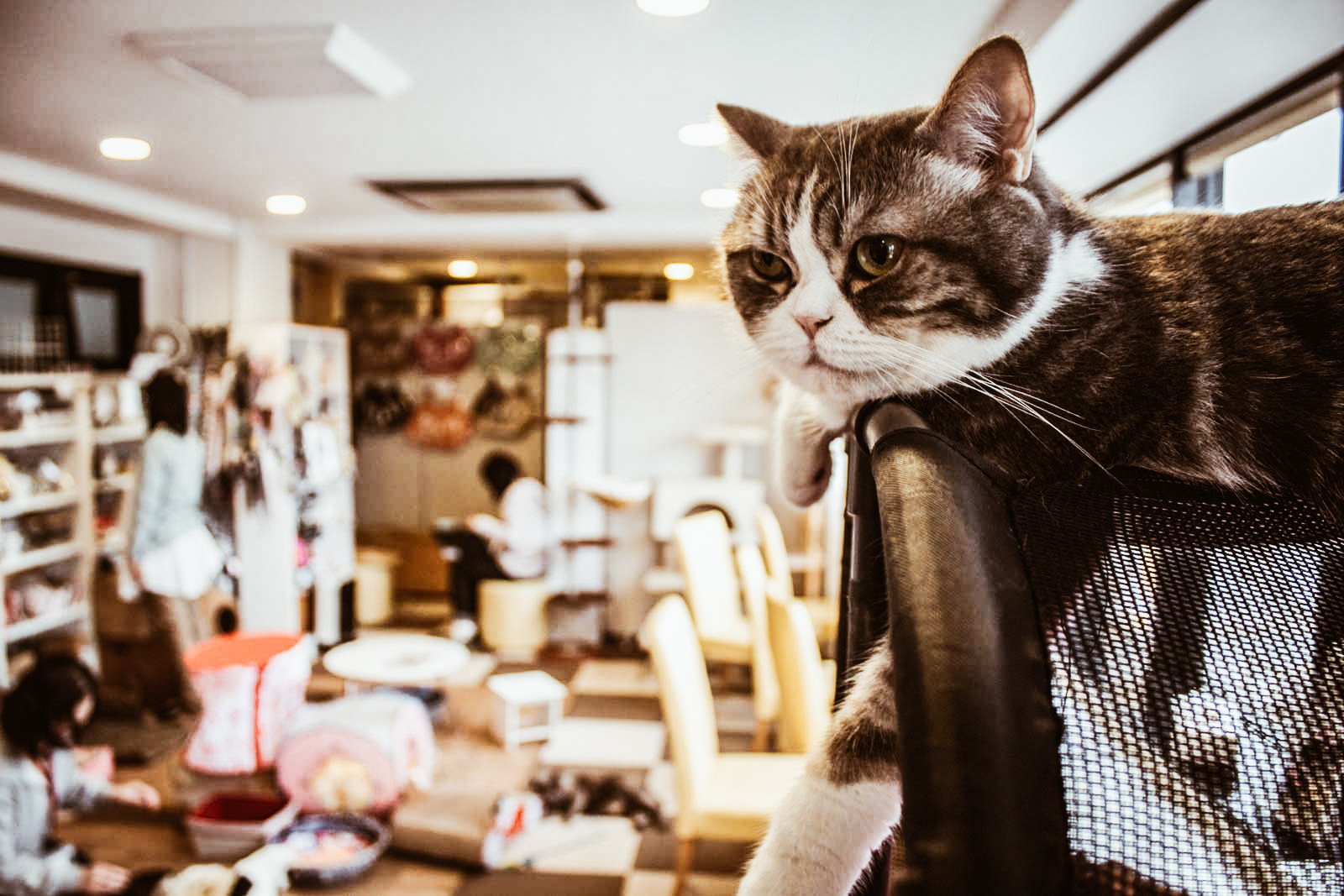
photo credits: ddnews.gov.in
We have already talked about thematic cafés before, enchanted places where we can become children again and dream a little. However, we talked very little about Pet Cafes. In Japan they are very popular and Tokyo is full of these cute cafes. The concept is that of a place with soft lights in which to relax, pampering an animal: cats, dogs, owls, snakes and even hedgehogs!
Compulsive shopping at Daiso!
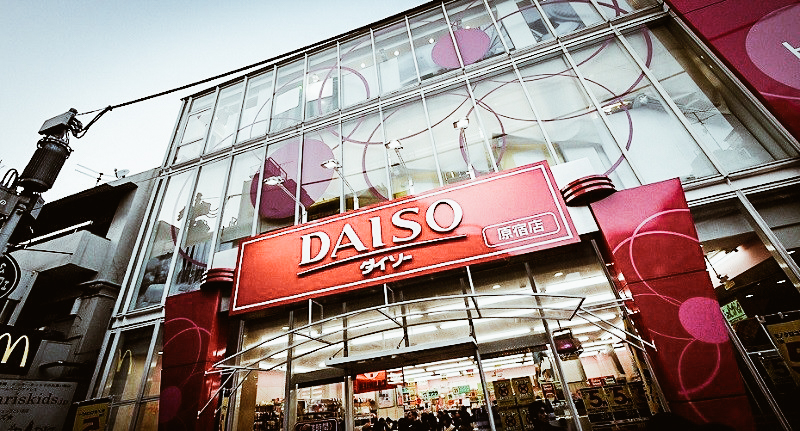
photo credits: planetyze.com
Exactly, compulsive shopping. In fact, Daiso offers 5 stories of articles of all kinds and all sold only for 100 Yen! Furthermore, the biggest Daiso is located in Takeshita Street and some others are scattered all around town.
Plunge into the green in Tokyo
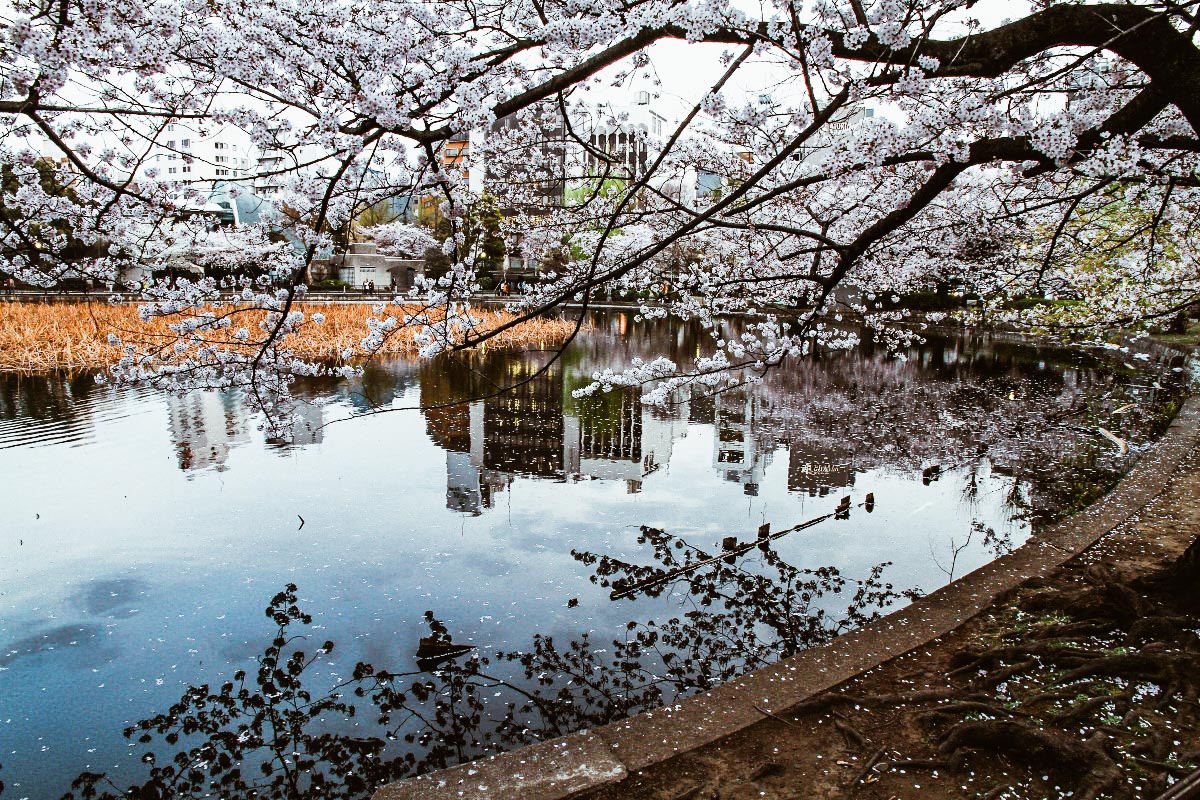
photo credits: blogdiviaggi.com
There is no shortage of beautiful parks in Tokyo. We'll talk about it in-depth in the second episode of our travel guide on Tokyo, but it is absolutely one of the things to do while walking around the city! Cherry trees in spring and momiji (Japanese red maples) will give you moments of pure relaxation in autumn, so a stop at each of the city's parks is essential. Absolutely not to be missed!
Sumo Tournaments
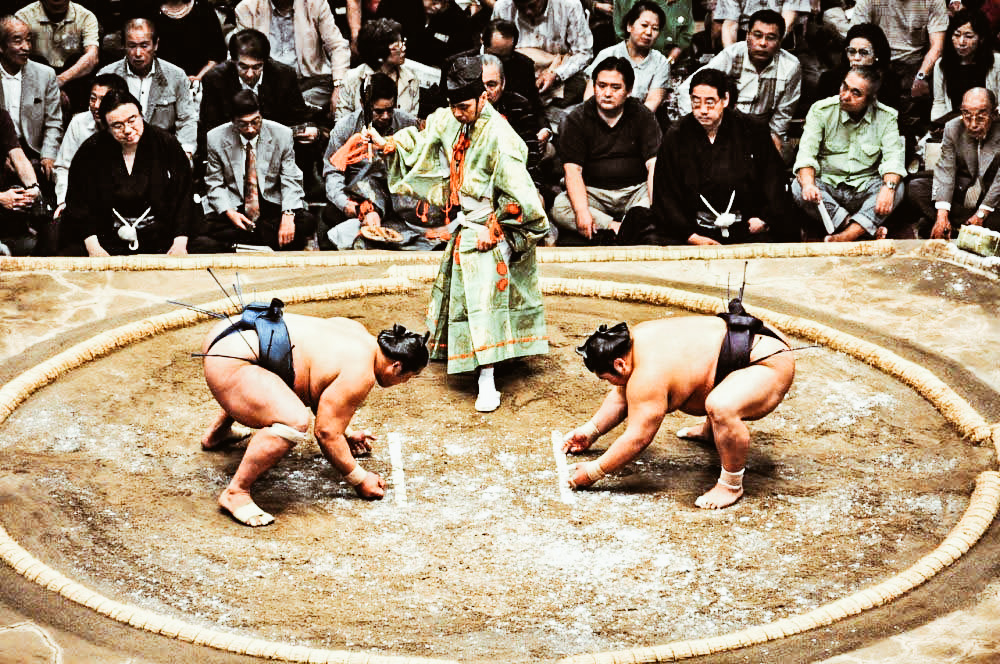
photo credits: japanistry.com
If you visit the city during tournaments (usually January, May and September) you should give yourself the experience of attending the Japanese national sport combat sessions at Ryugoku! For the Japanese, in fact, Sumo is not just about sports, but about a real unmissable form of art.
Tokyo Museums
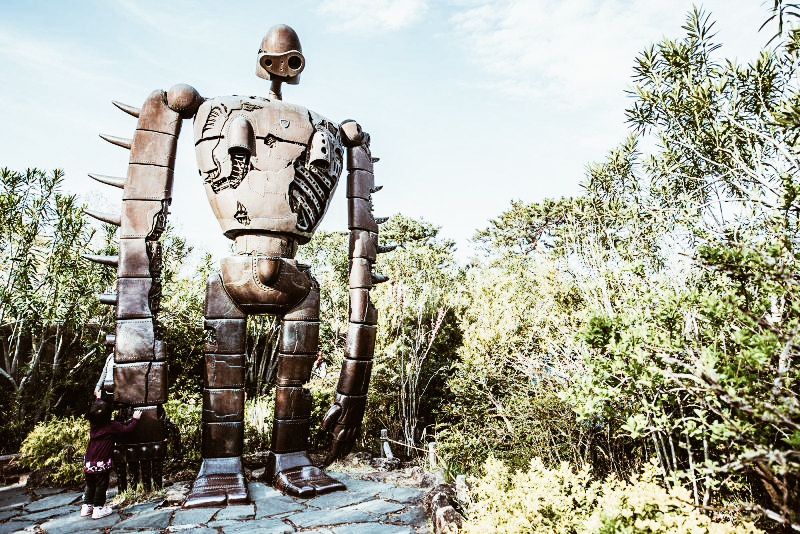
photo credits: jrailpass.com
Like any self-respecting city, Tokyo also offers museums, but in this case, they take on an even more special feature because there are so many types of them. From the historic Tokyo National Museum at Ueno, to the Edo-Tokyo Museum to Ryugoku, and the Ghibli Museum for Studio Ghibli lovers or the bizarre Museum of Parasites in Meguro!
Golden Gai

photo credits: theculturetrip.com
The Golden Gai is a small area of Kabukicho in Shinjuku, famous for its network of narrow alleys that are connected by even closer passages. Along these narrow streets, there are more than 200 tiny bars, clubs and restaurants that are absolutely unique and characteristic.
Travel on the Yurikamome-line

photo credits: wow-j.com
The Yurikamome-line is the railway line whose trains are driverless and speed through the skyscrapers of the city! A must-try when the sun goes down and the city lights come on...
Izakaya
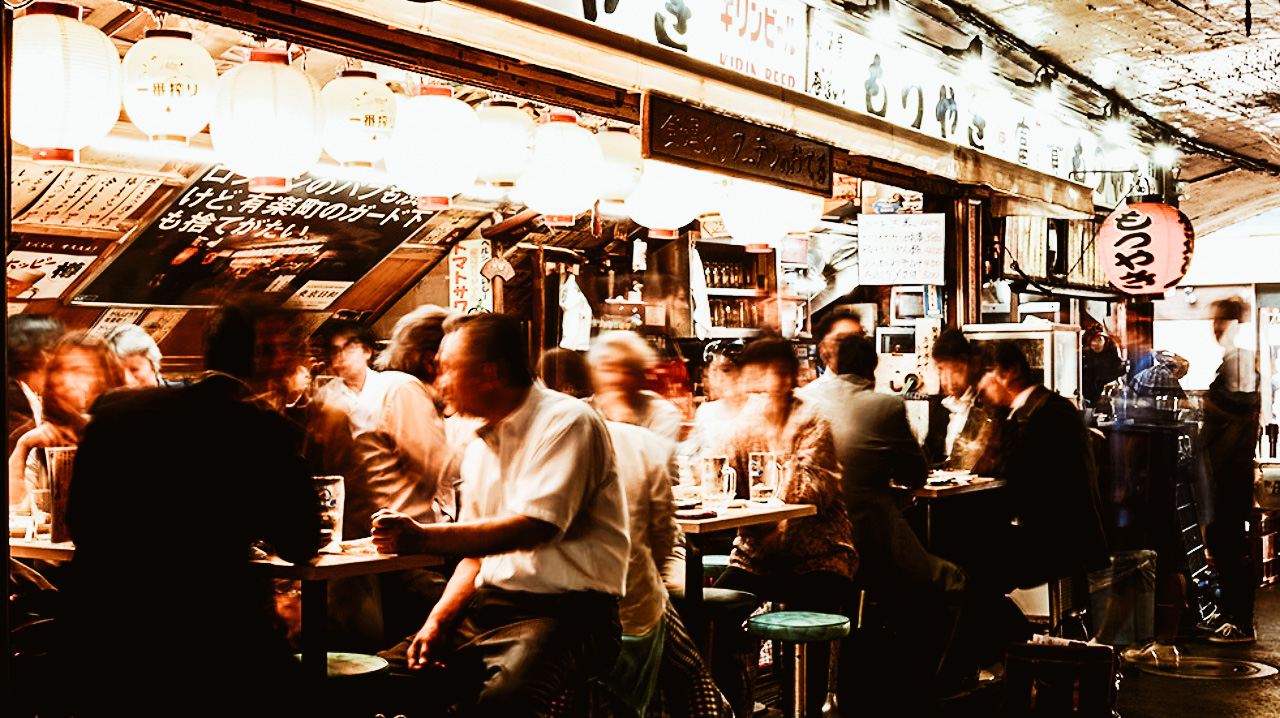
photo credits: jamesmagazine.it
Izakaya is a typical Japanese restaurant where food is served to accompany a vast amount of alcohol. Usually they are places frequented by colleagues from a company who, after a long day of work, give themselves a break to talk about a bit of everything.
Sashimi for breakfast at the Toyosu fish market

photo credits: travel.sygic.com
How many times have we eat sashimi or sushi and say "wow, this is really good and fresh!" Well... we probably still have no idea what fresh and good means!!!
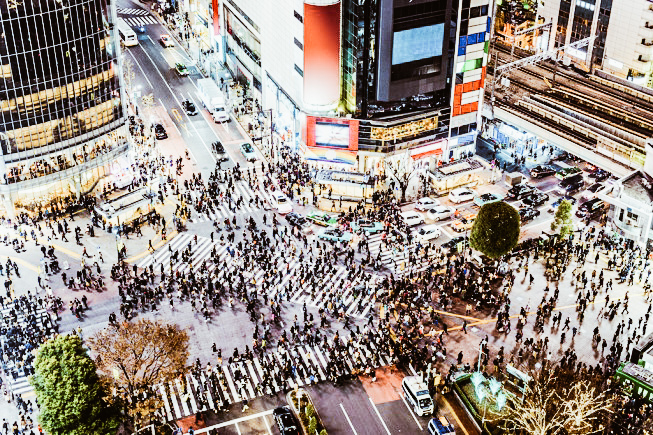
photo credits: corriere.it
These are only 10 points we thought of, but in reality, there are really a million things to do in Tokyo. For example, you can taste everything that exists with green tea, go to an onsen, cross the Shibuya intersection, participate in Hanami, pray in a temple, admire Mount Fuji. To not forget yet, Ginza, Shinjuku, Kanagawa, Saitama, Odaiba... Tokyo is not a city, but a wonderful dream!
9 must-see cities in Japan
I always thought that making a list of the beauties of Japan was a bold venture. In fact, we are talking about a truly marvelous country, where every corner has a reason for being beautiful and every city has its importance.

photo credits: gaijinpot.com
Despite this, however, many travelers ask us for advice on what to see, what not to miss, and we don't want to disappoint them! We will try to list 9 must-see cities, 9 essential stages to get back home with unforgettable memories.
TOKYO

photo credits: liberamenteviaggi.info
Chaotic, elegant, electrifying, ancient, vital, to be discovered over and over again, Tokyo is a metropolis in constant evolution, the world capital of technological development. Its neighborhoods are essential destinations for those facing a trip to the Land of the Rising Sun for the first time. Here we find Shibuya with the most transited crossing in the world and the square dedicated to the famous Hachiko dog.
We cannot forget the cosmopolitan Shinjuku and Ginza, realms of shopping and luxury. We then continue on the artificial island of Odaiba with the extraordinary European reconstructions. We then move on to Asakusa which seems to turn back to the past and to tradition. Akihabara the undisputed realm of modernity and technology, Roppongi realm of entertainment. The famous Bunkyo district where the Tokyo dome is located and an area of prestigious universities. To finish with Shinagawa, Tokyo's business center and the curious and extravagant Harajuku. Present and past, excesses and traditions mix in a huge city that you will want to visit all the time!
SAPPORO
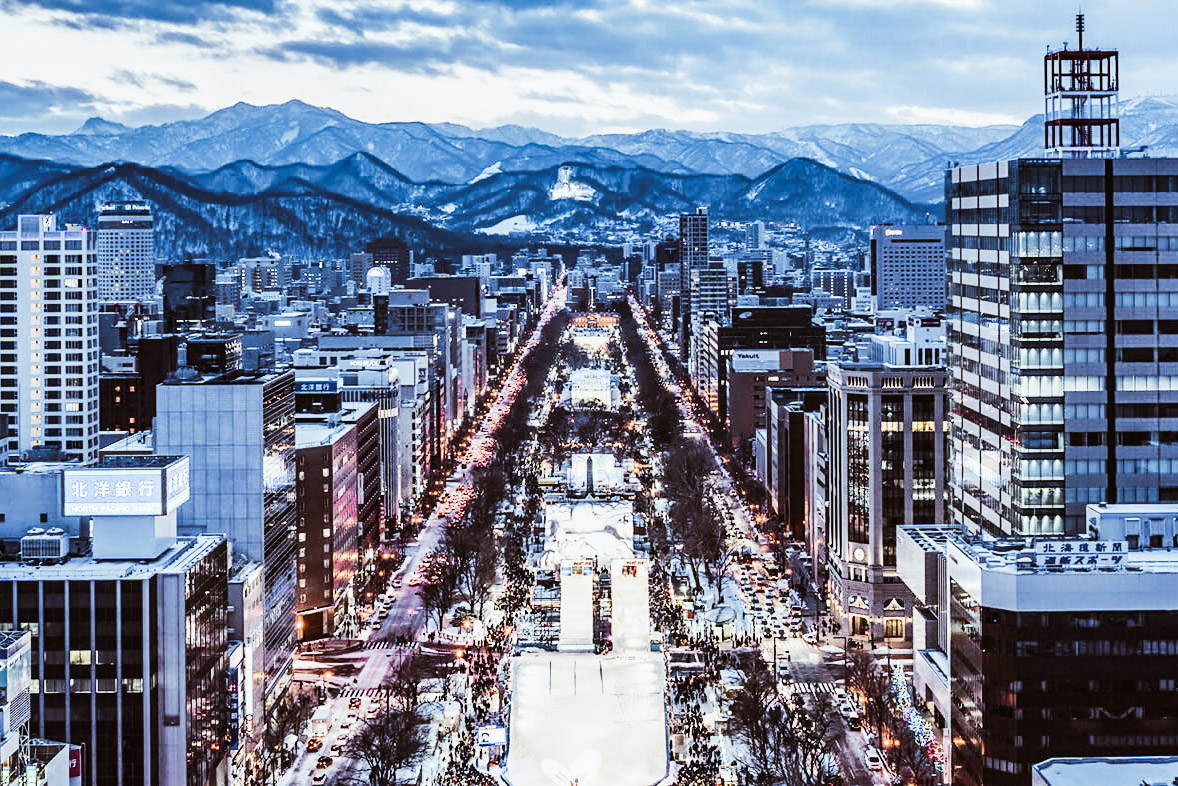
photo credits: conventionsapporo.jp
A pioneering city, Sapporo was built on the basis of a rectangular North American style street system with linearly named and numbered streets. Capital of Hokkaido and Japan's fifth-largest city, Sapporo offers numerous parks whose visit is really recommended! Also, this beautiful city is famous for its ramen, beer and the annual snow festival held in February.
KYOTO
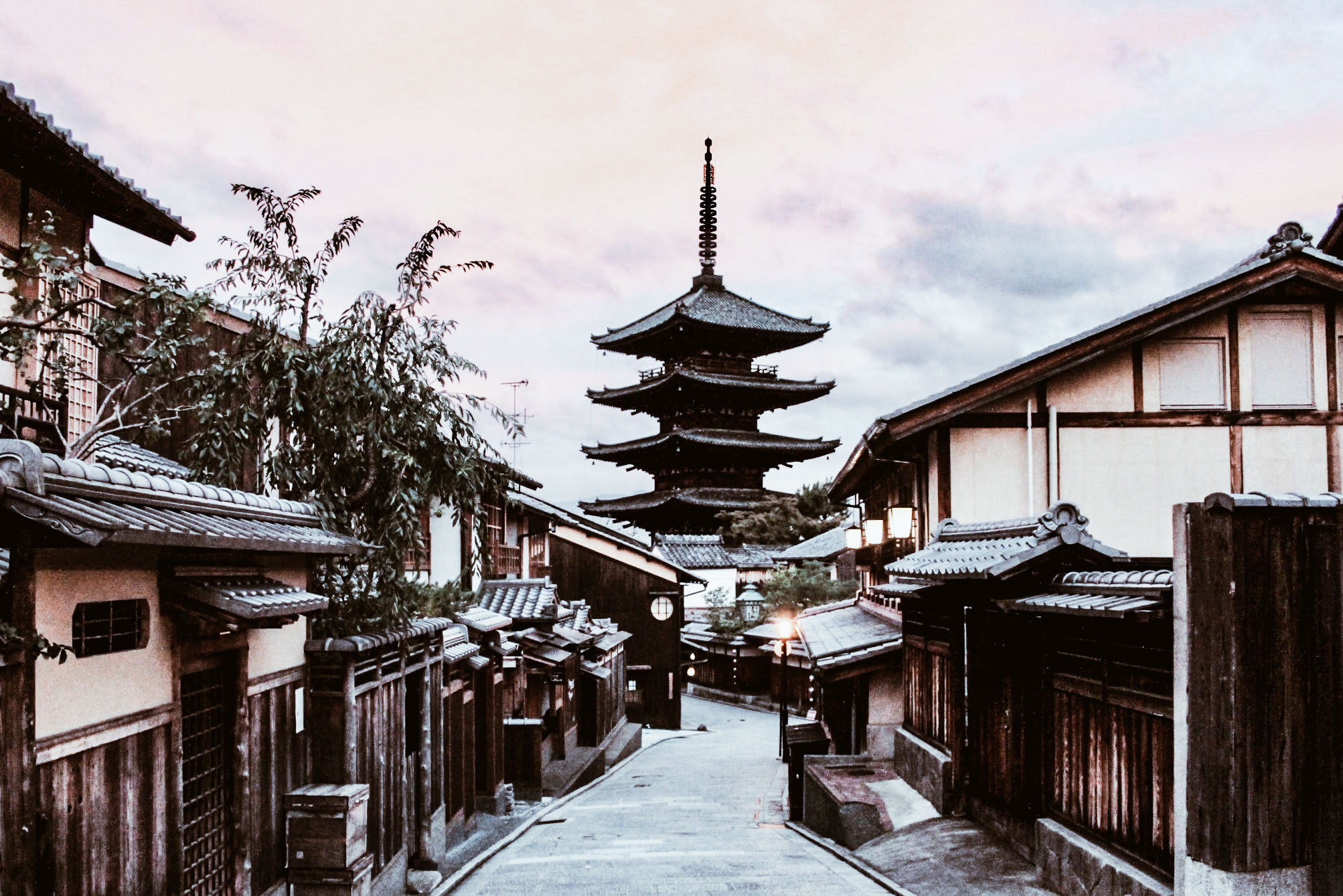
photo credits: ilviziodellesistenza.it
As the ancient capital of Japan, Kyoto has an unparalleled charm thanks to its many Shinto shrines and Buddhist temples. Not to mention gardens, imperial palaces, traditional houses built entirely of wood and the Geisha district in Gion. Rich in traditions, visiting Kyoto is essential for a dip in ancient Japan capable of conquering anyone who sets foot in it!
FUKUOKA
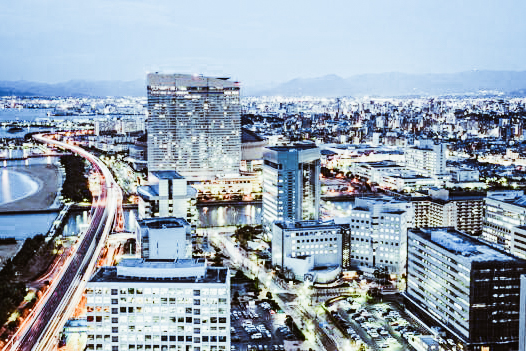
photo credits: bbc.com
2000 years of history for this city that rises to the north of the Kyushu coast. A dynamic and ever-expanding metropolis, Fukuoka was born from the union of two cities: the homonymous and Hakata. Today it is still possible to hear about Hakata referring to Fukuoka! The ancient temples, the marvelous beaches and the numerous shopping centers make Fukuoka an essential destination for travelers. This place is also perfect for fans of traditional yatai (outdoor food stalls) that are found every night in Nakasu and Tenjin and whose typical dish is Hakata Ramen: superlative!
OSAKA
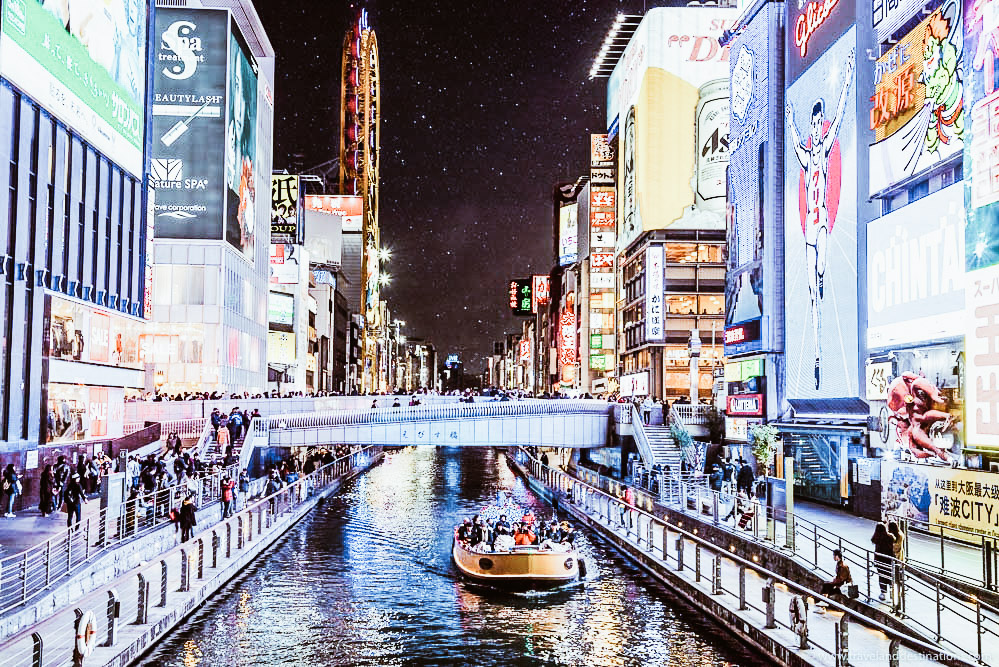
photo credits: travelanddestinations.com
Capital of good food, Osaka was the commercial center of Japan, preserving today its important role as a major industrial and port district. Not only that, Osaka is loved by visitors thanks to the rich nightlife it offers. Furthermore, we cannot forget the variety of street foods one can come across when strolling through the lively Doutonbori district. Moreover, it is possible to enjoy its architecture and the 16th century Osaka Castle, its symbol par excellence.
NARA
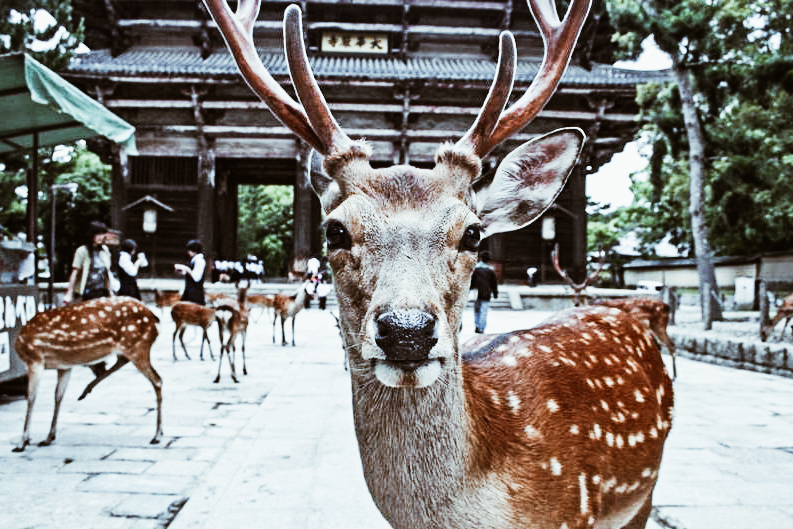
photo credits: asiancrush.com
Here we come to the town with the greatest number of treasures dating back to the 8th century. Famous for the deer living free in the park, Nara is the cradle of Japanese art, literature and culture. Among all the wonderful temples, that of Todaiji is the most loved by visitors because it is the one that contains the Daibutsu-den the largest wooden building in the world containing the bronze statue of the Great Buddha, 15m high.
NAGASAKI

photo credits: at-nagasaki.jp
We talked about Nagasaki for a long time in our blog and it is absolutely among the 9 cities to visit not only for the sad memory tied to the past but for all its wonders. There is a particular event that deserves our attention: the celebrations of the ancient lunar new year, now commonly called "Lantern Festival". Every year over 15,000 lanterns are lit and placed in various parts of the city, dances, exhibitions and shows of various kinds fill the heart and eyes leaving that wonderful sensation of satiety.
NAHA

photo credits: weblogtheworld.com
The capital of Okinawa, Naha has an unusual Japan. Much more similar to tropical atmospheres, here the rhythms are relaxed and the traditions stand alone. Along the Kokusai Dori you will come across shops, restaurants, souvenir shops, cafes, lively hotels and you can also reach the Makishi market where the particular Okinawan cuisine finds its full identity.
NAGOYA

photo credits: matcha-jp.com
The birthplace of Oda Nobunaga and Toyotomi Hideyoshi, Nagoya embodies the economic dynamism of the Rising Sun. This city is rich in industrial museums, shopping centers and the Mei-eki, the immense railway station. The Castle, the television tower, the Atsuta Horaiken Honten and, for car enthusiasts, the Toyota Automobile Museum are just some of the tips we give you not to lose at any cost!
We stopped at 9 cities, but in reality, we could have listed 15, 20, even 25! There are so many in my heart, but to discover them you just need to follow us on this long journey. Little by little, we will really take you everywhere so get ready and run to the next stop!
Fuji-san, the sacred mountain of Japan
My heart is extremely connected to Mount Fuji (富士山). I don't know exactly why, but I know I can't stop getting thrilled when I see him.
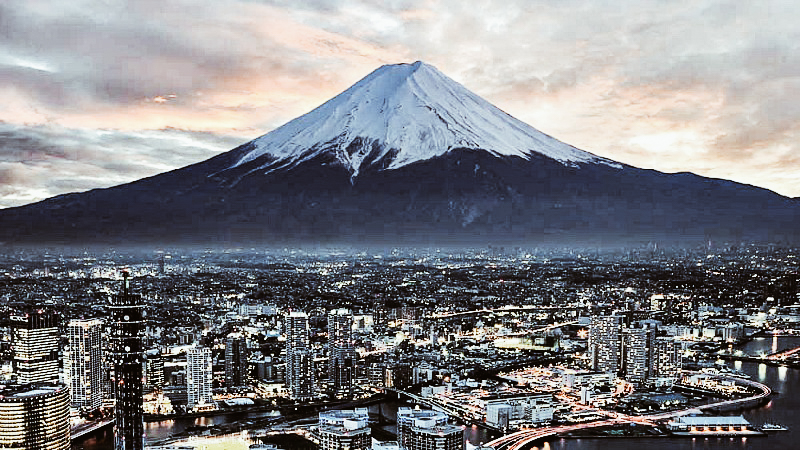
photo credits: animeclick.it
Spiritual beauty
Higher than 3700 meters, Mount Fuji is a perfectly symmetrical volcano. Listed among the 3 sacred mountains (三霊山) of all Japan and recognized by UNESCO as a world cultural heritage.
This impressive wonder rises between the prefectures of Shizuoka and Yamanashi, near the Pacific Ocean coast of the island of Honshu, between Hamamatsu and Tokyo.
Mount Fuji was feared and respected since the Heian period. Being a volcano, it was considered a real divinity, so much so that it possessed a very high number of sanctuaries (the sanctuaries of Asama) and became the training ground for samurai. In 664 his climb was first performed by a monk and was forbidden to women until the ban was lifted in 1872. In fact in 1868 during the Meiji period, Lady Fanny Parkes, wife of the British ambassador, began the climb proving that the Gods would not have unleashed any revenge.
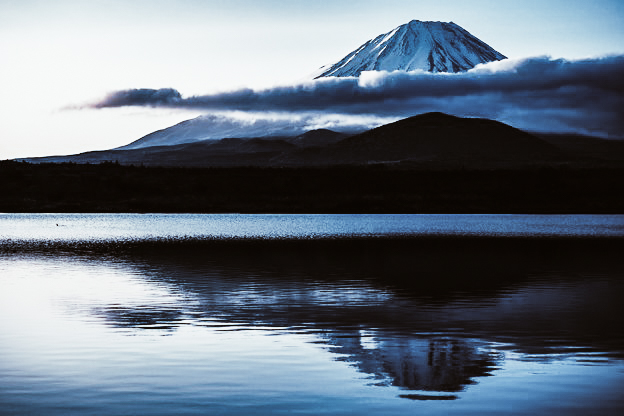

photo credits: animeclick.it, David Hsu
The 5 Lakes Region
Mount Fuji is surrounded by 5 lakes, each one of them special.
Lake Kawaguchi (河口湖) is in the center of the region and the north face of the mountain is reflected on its surface like a mirror. Lake Yamanaka (中 中 湖), the largest of the five and located on the highest point is full of shops, restaurants and quiet bed & breakfasts where you can spend the night. The small and mysterious Sai (西湖) lake is what surrounds Jukai, the forest of Aokigahara. Lake Shōji (精進 湖), the smallest of the lakes, is the one that offers the most suggestive view of the mountain. And finally, Lake Motosu (本栖湖), the deepest and least touristy, is the one whose exceptional view on the Fuji-san is represented on the 1,000 yen banknotes.
Of course, all the lakes, except the Shōji, are navigable. Indeed, it is possible to take splendid cruises that allow you to admire the lush nature and peace under the watchful eye of the Sacred Mount.
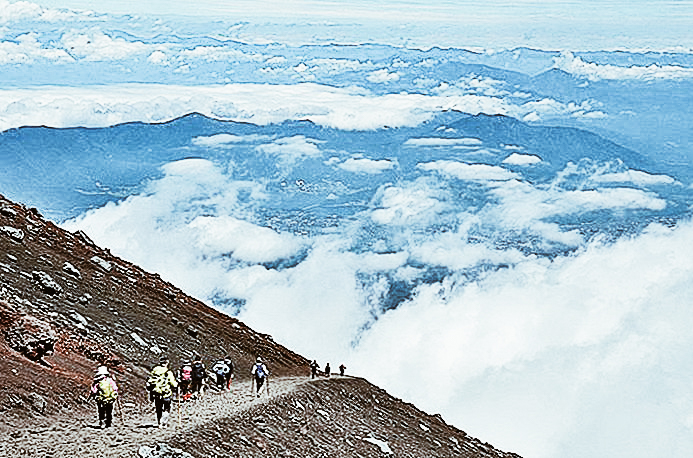
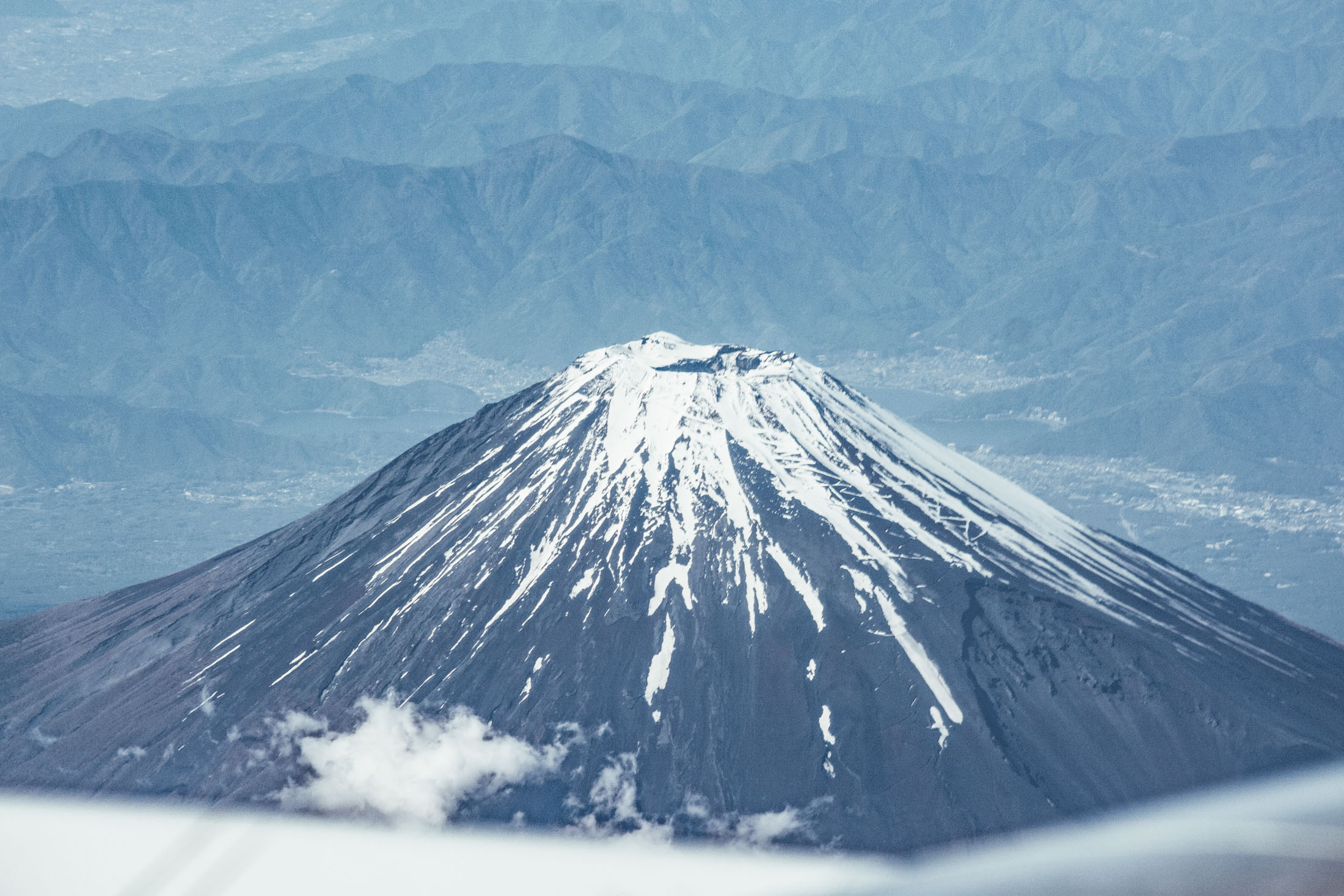
photo credits: animeclick.it, Daniel Ramirez
Climbing Mount Fuji: a challenge of love!
I don't know if it ever happened to you, probably not everyone is as crazy as I am, but I have often say "for you I am ready to climb Mount Fuji"! And doing it is not so impossible after all, in fact, it is even open to children and the elderly! In the months of July and August you can reach the so-called "Fifth Station" with the Fuji Subaru bus in the early afternoon, stop in a shelter (bookable with a lot of advance) and reach the summit before dawn to see the Sun rising.
From the fifth station you can find the paths to choose to reach the top. The Kawaguchiko - Yoshida-guchi trail is the most popular and traditional one. The Gotemba-guchi path is the longest and most difficult, the Path of Fujinomiya-guchi or Mishima-guchi, the shortest but also least fascinating. And finally, the path of Subashiri-guchi that joins the eighth station with that of Yoshida-guchi. The average journey time varies between 5/8 hours of ascent and 3/4 hours of descent.
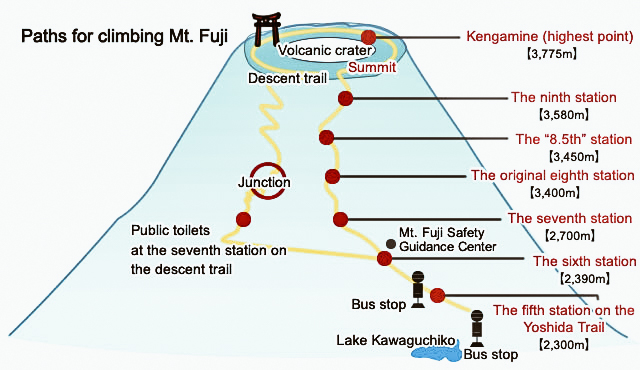
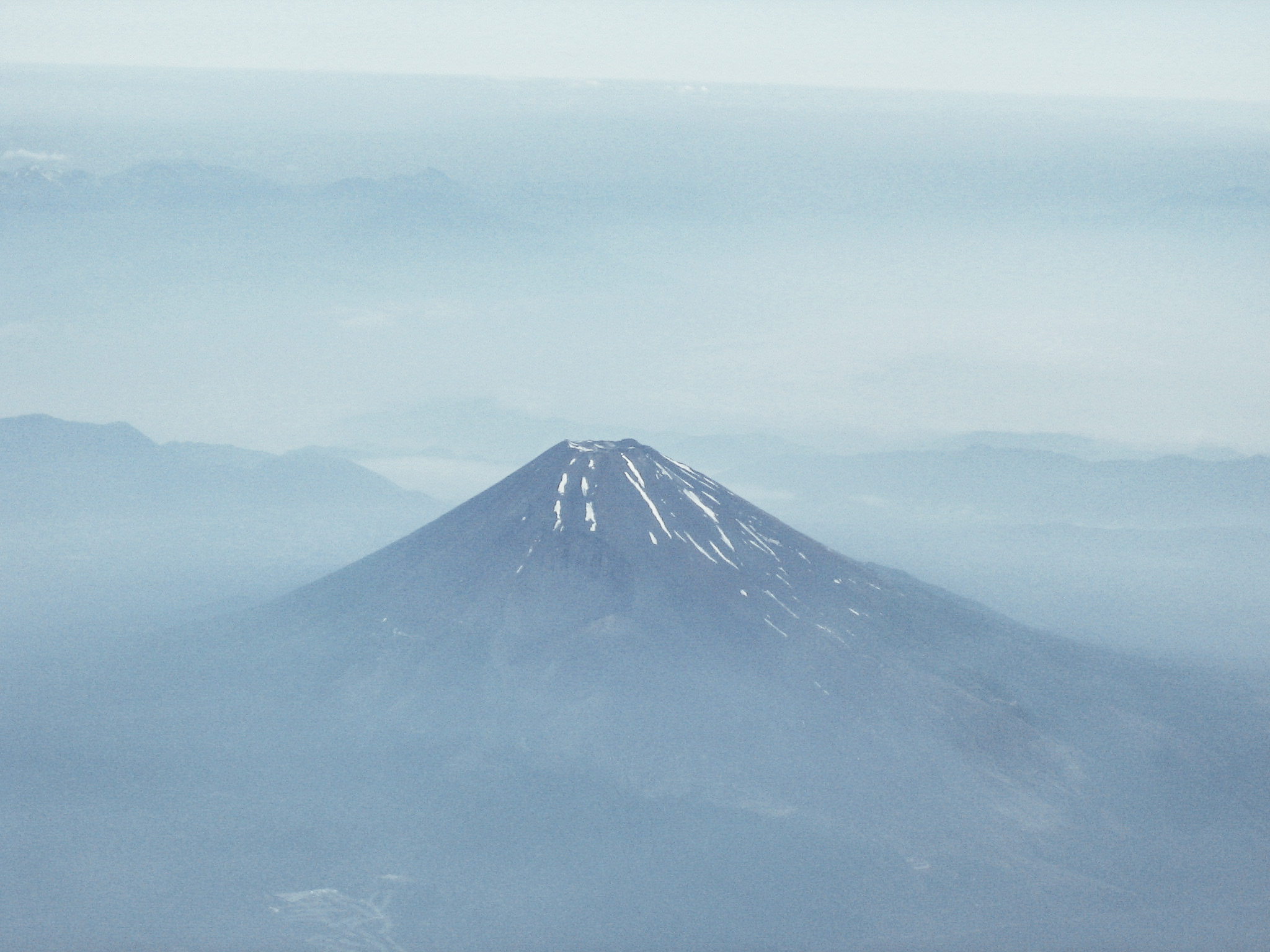
photo credits: yamanashi-kankou.jp, Joe Jones
All the information to undertake this extraordinary adventure is available on the official website. I made a promise, so sooner or later I'll climb the Fujisama, and you?
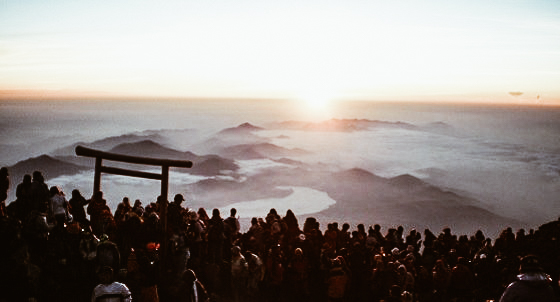
photo credits: giapponeviaggi-miki.it











